Nite Art Art across Melbourne
Art/icle
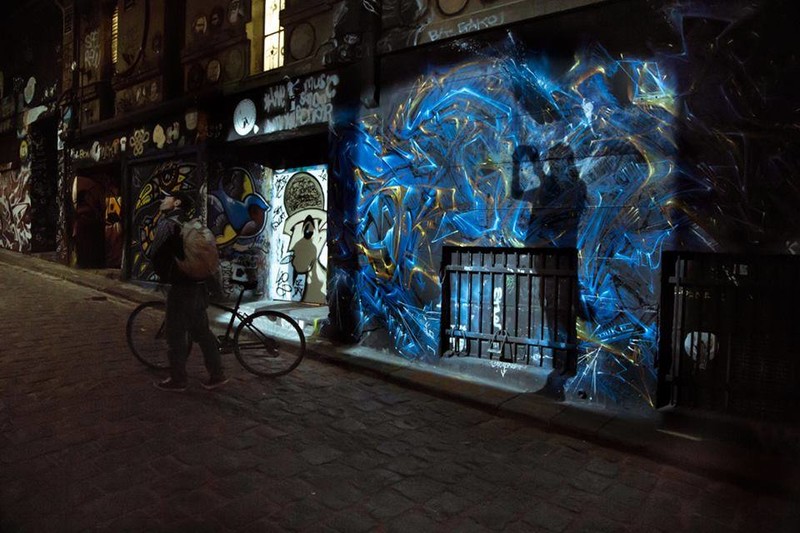
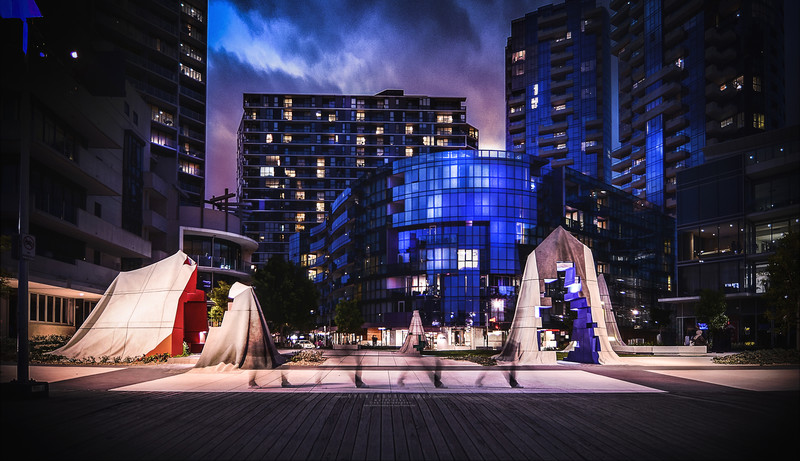
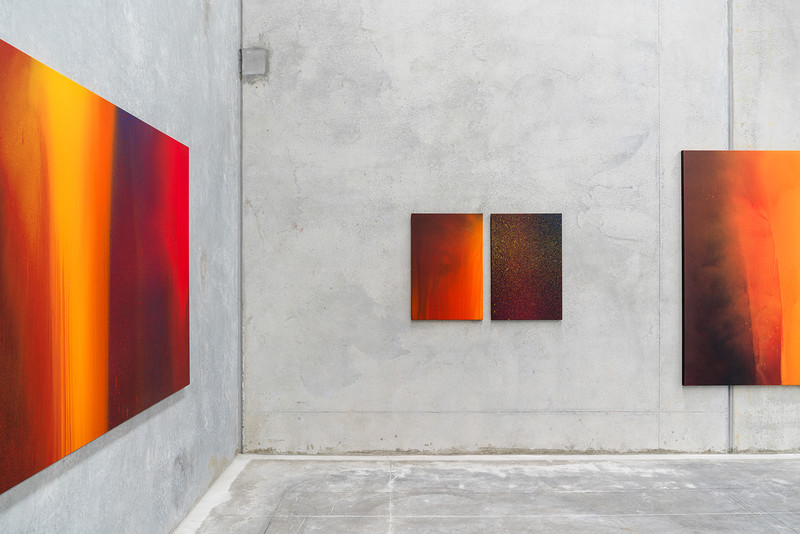
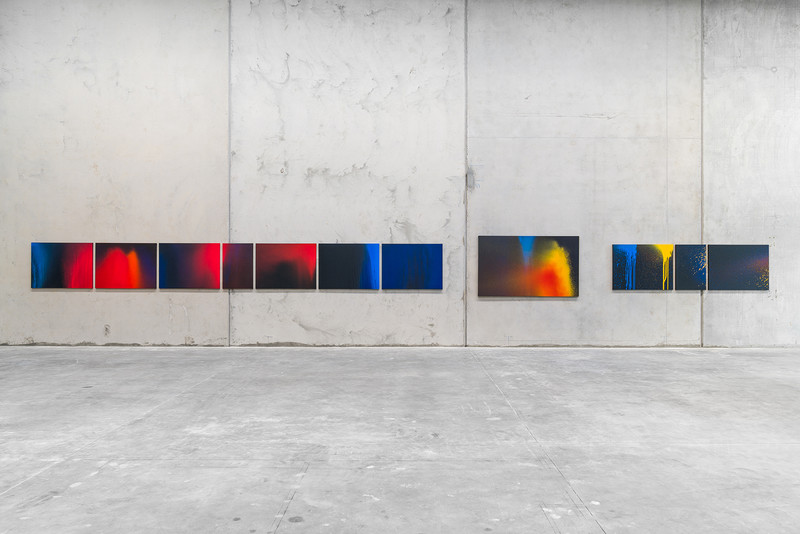
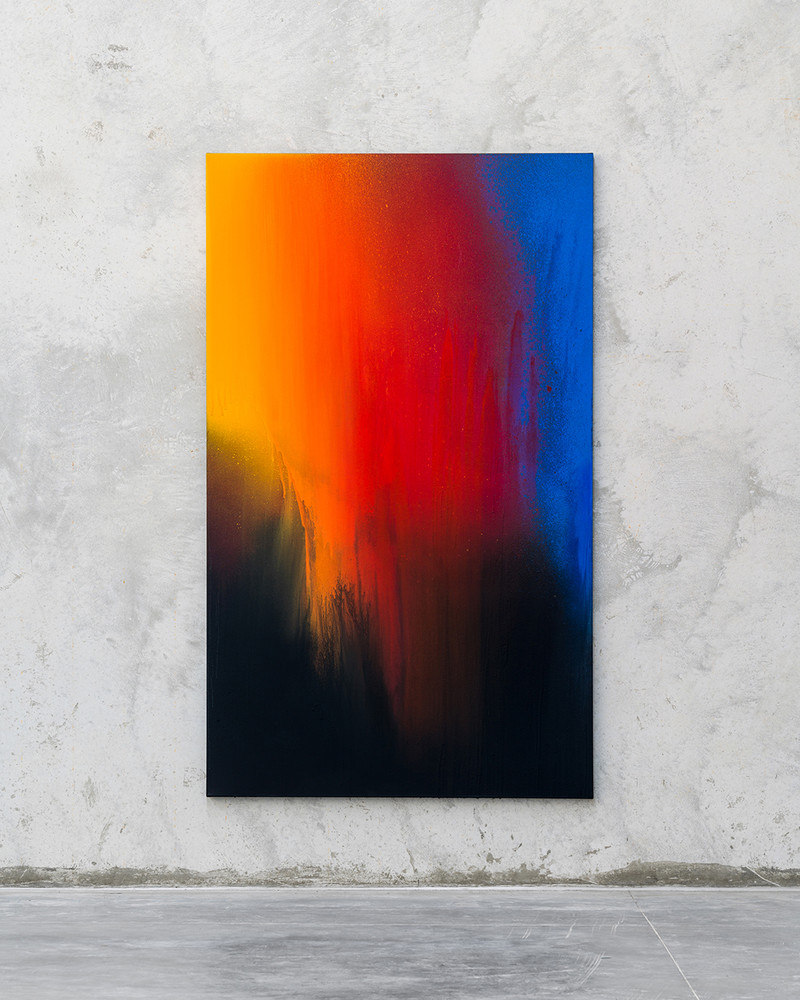
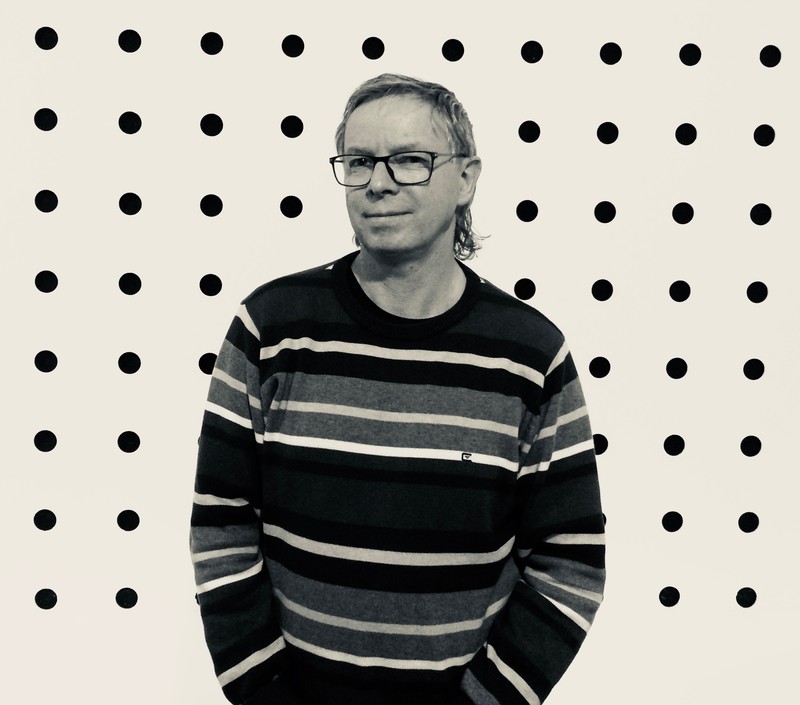
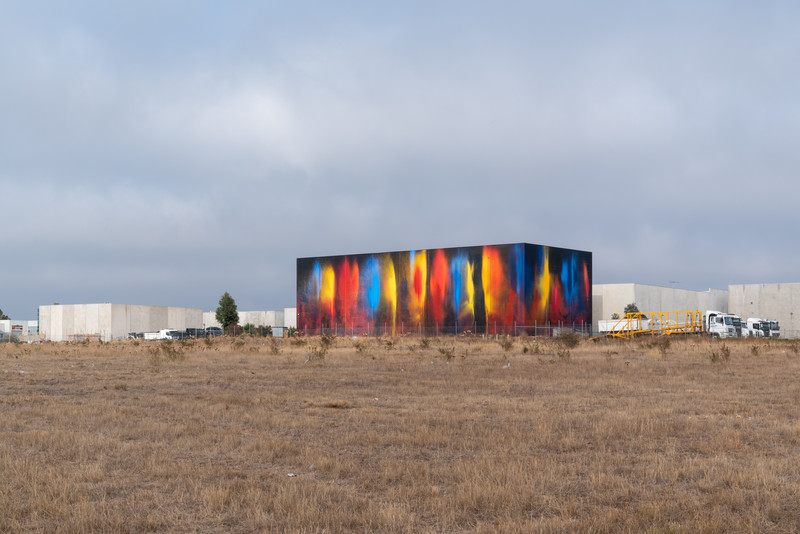
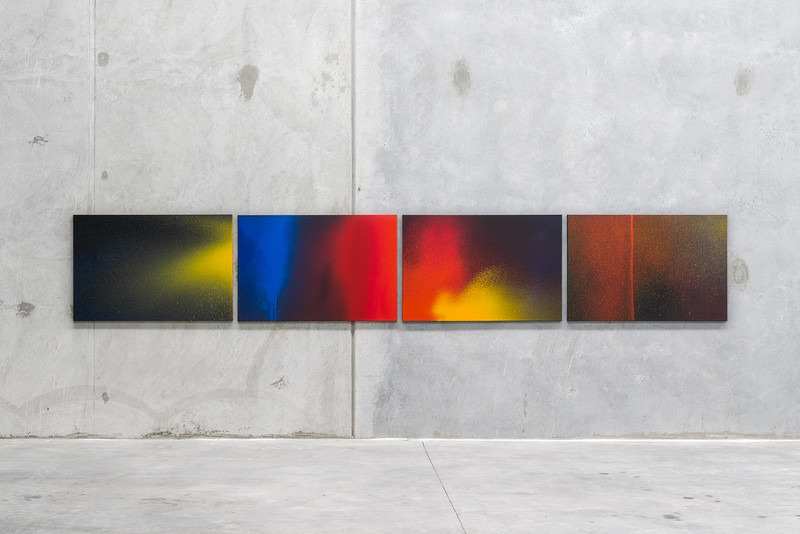
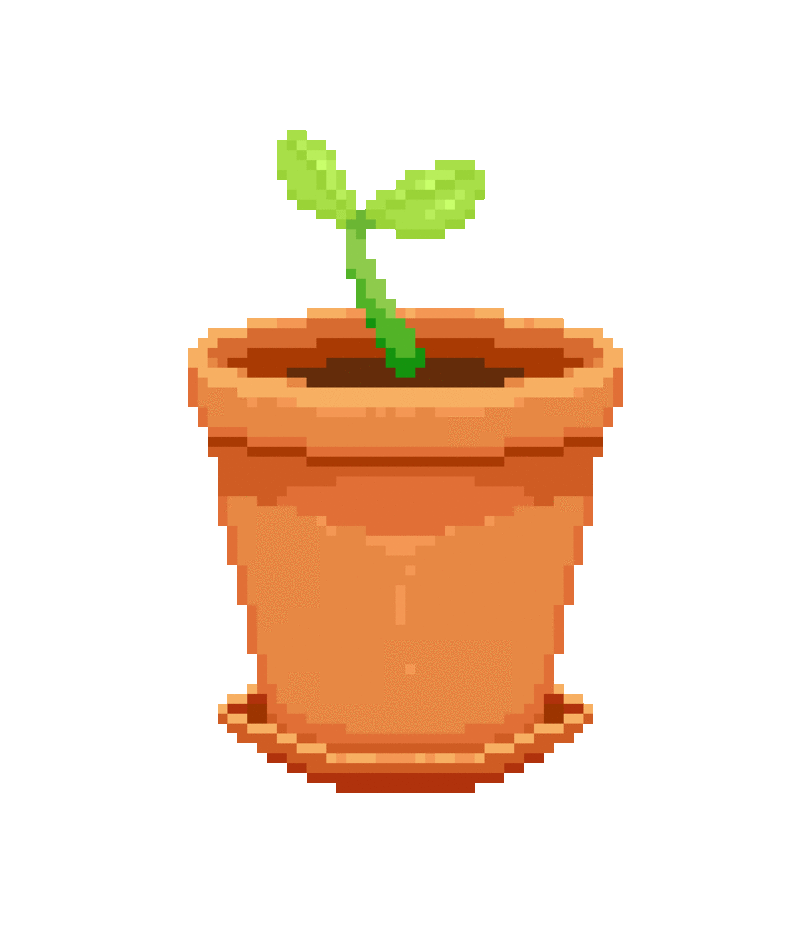
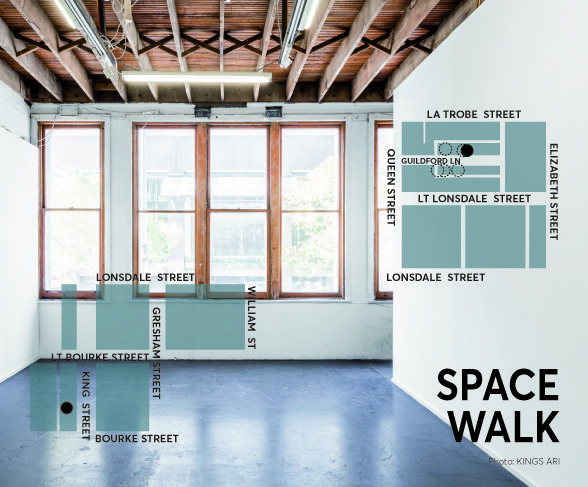
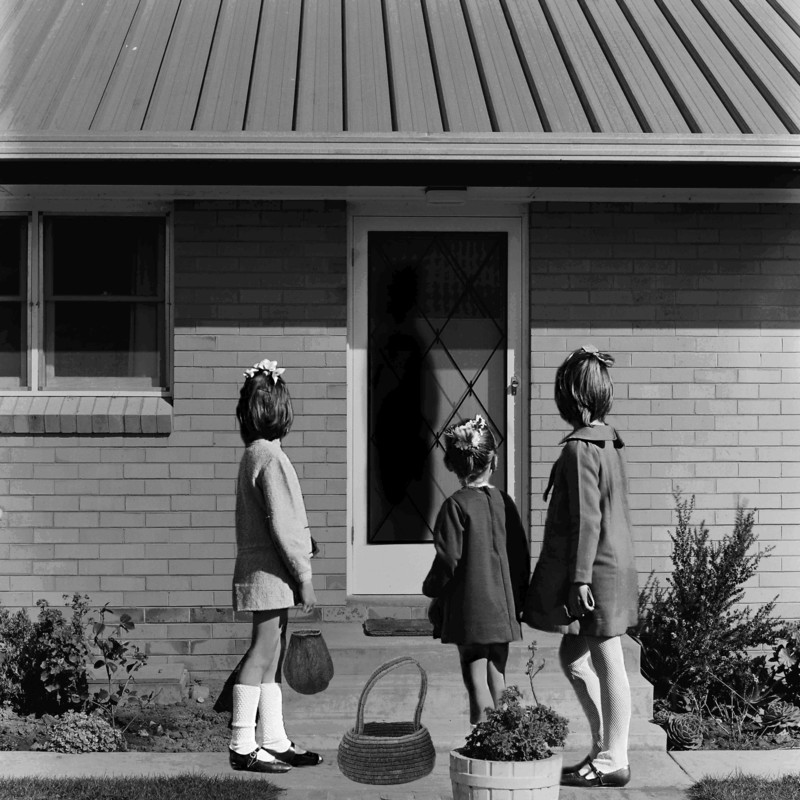
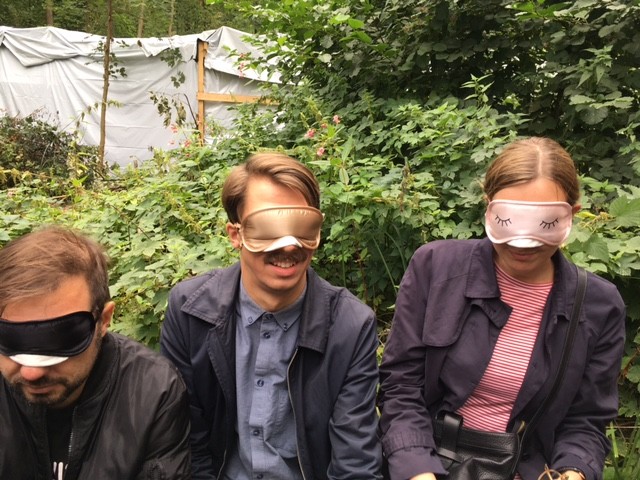
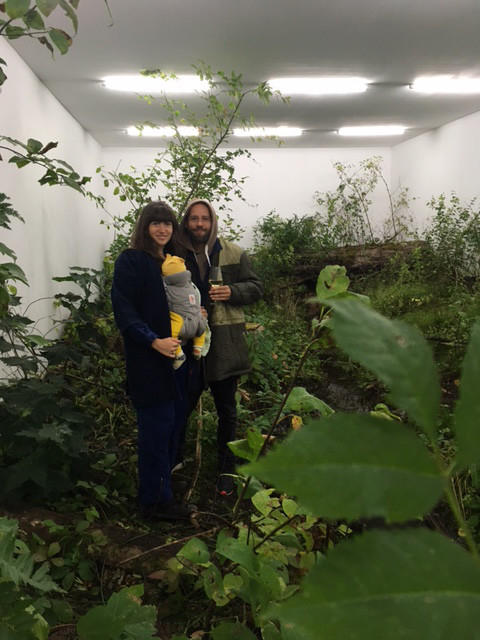
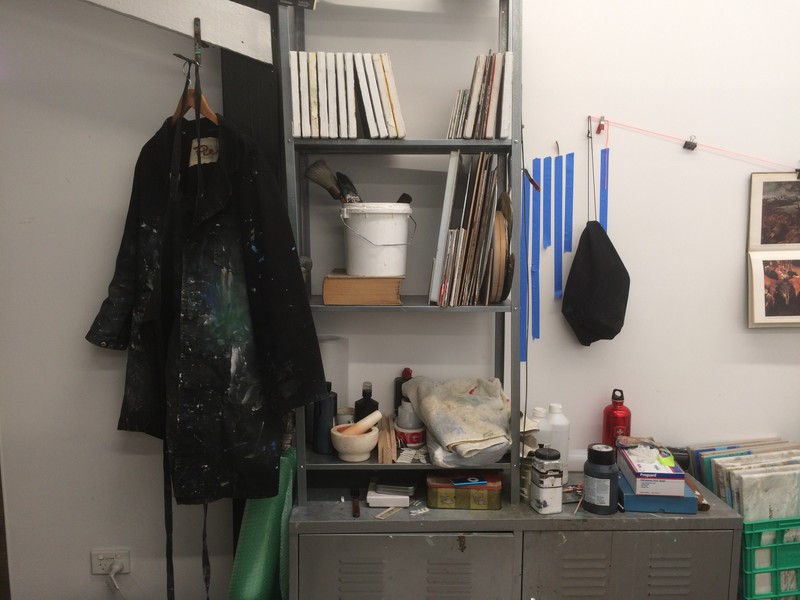
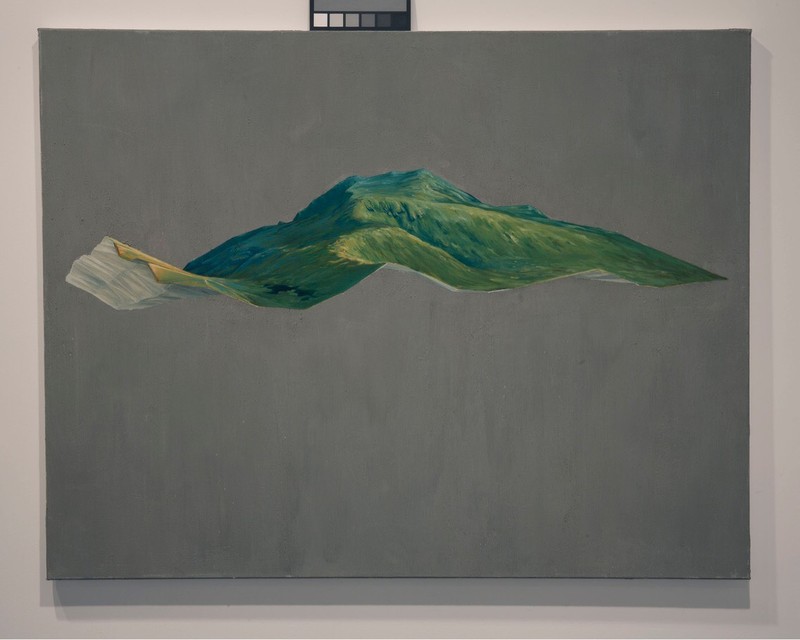
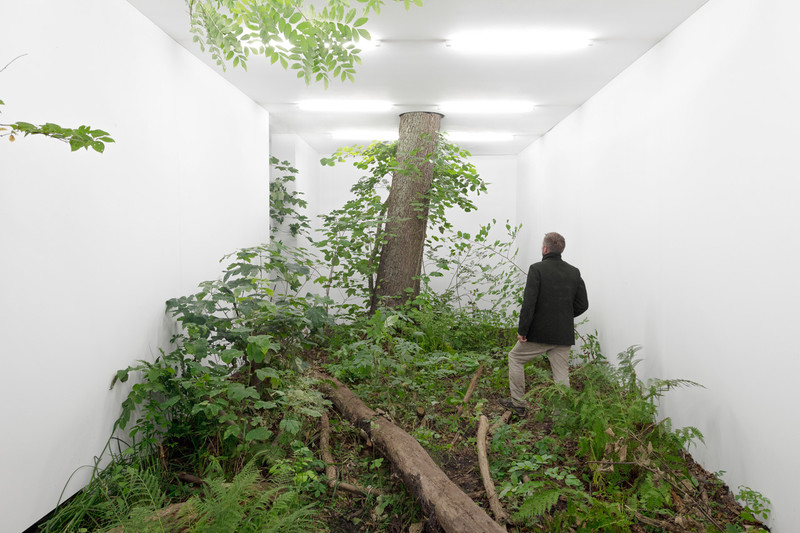
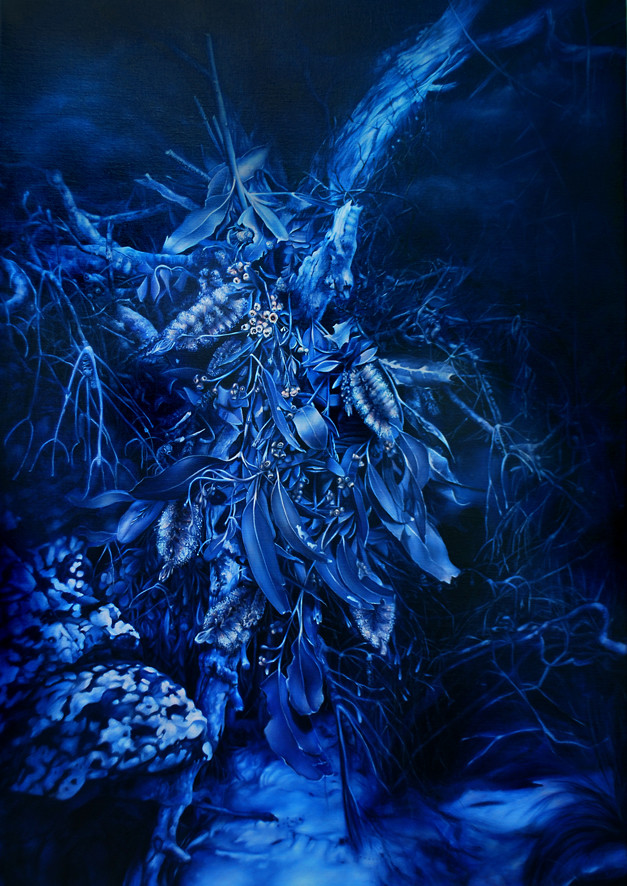
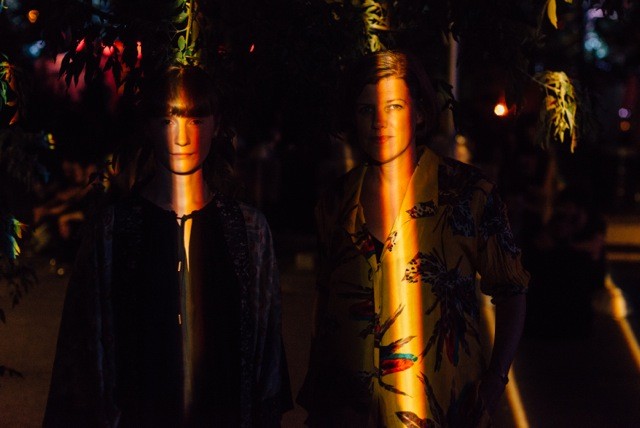
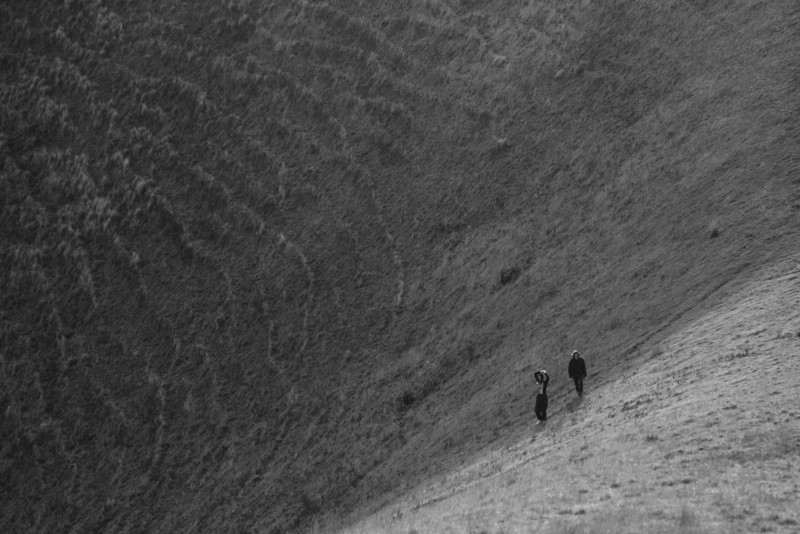
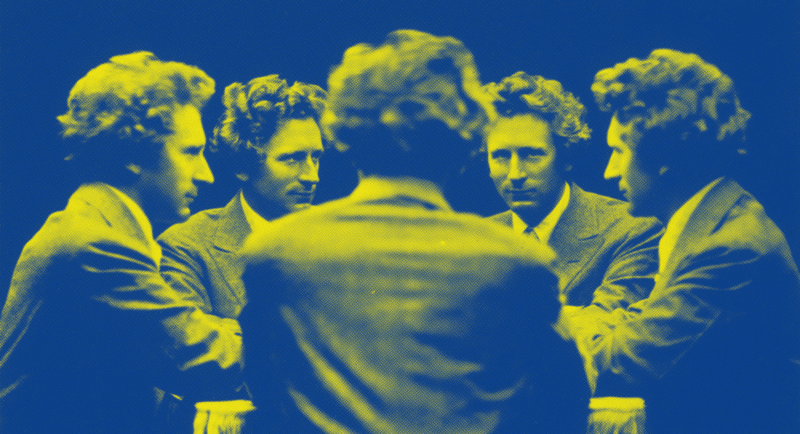
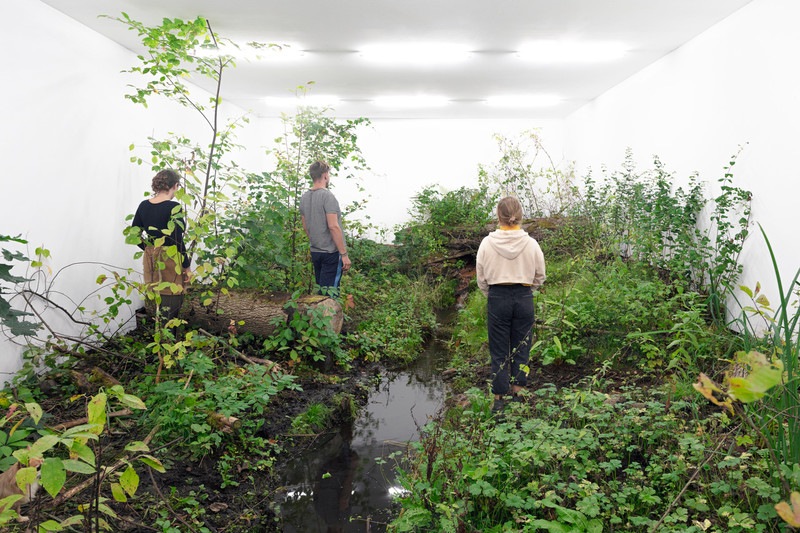
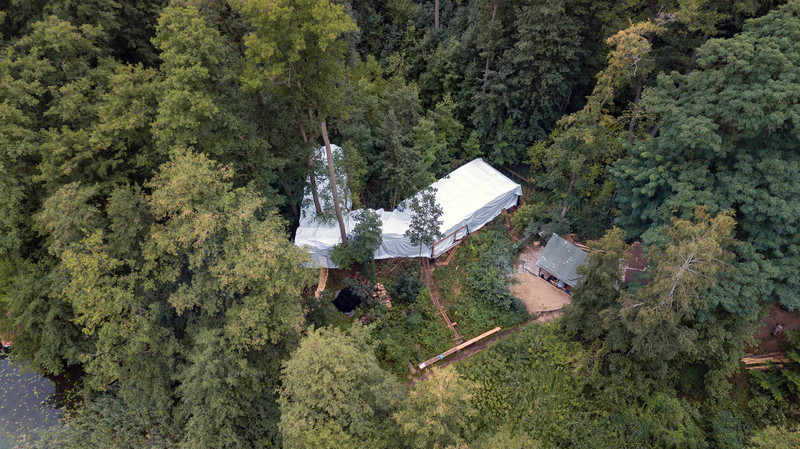
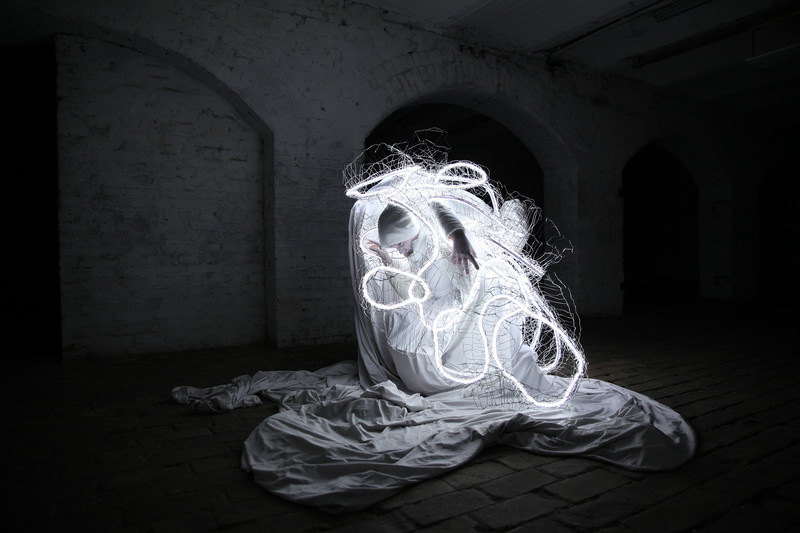
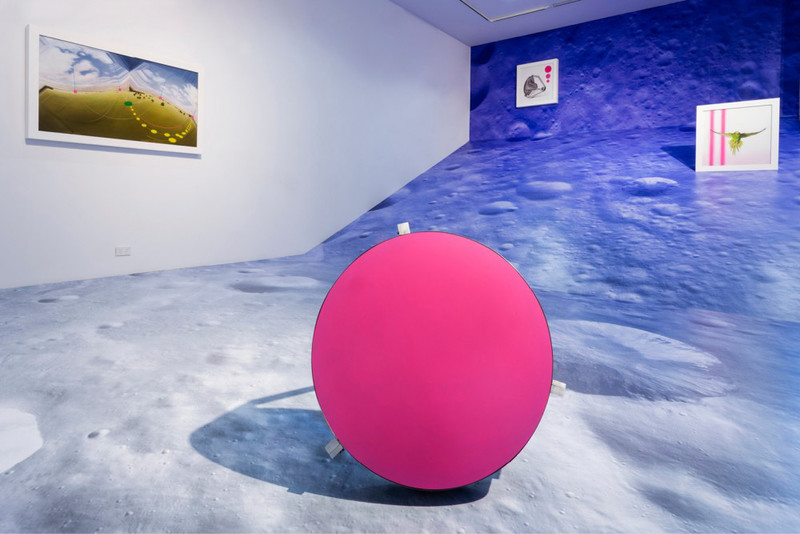
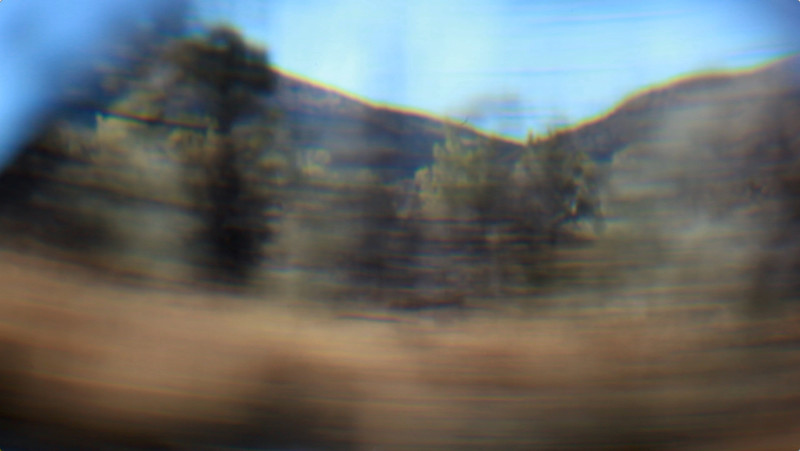
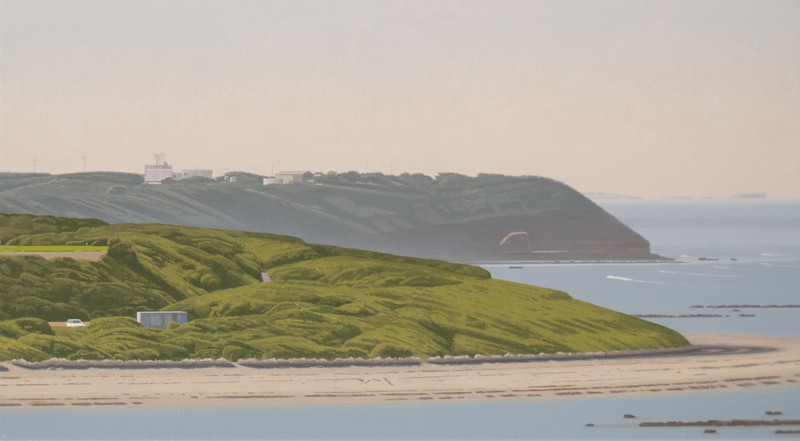
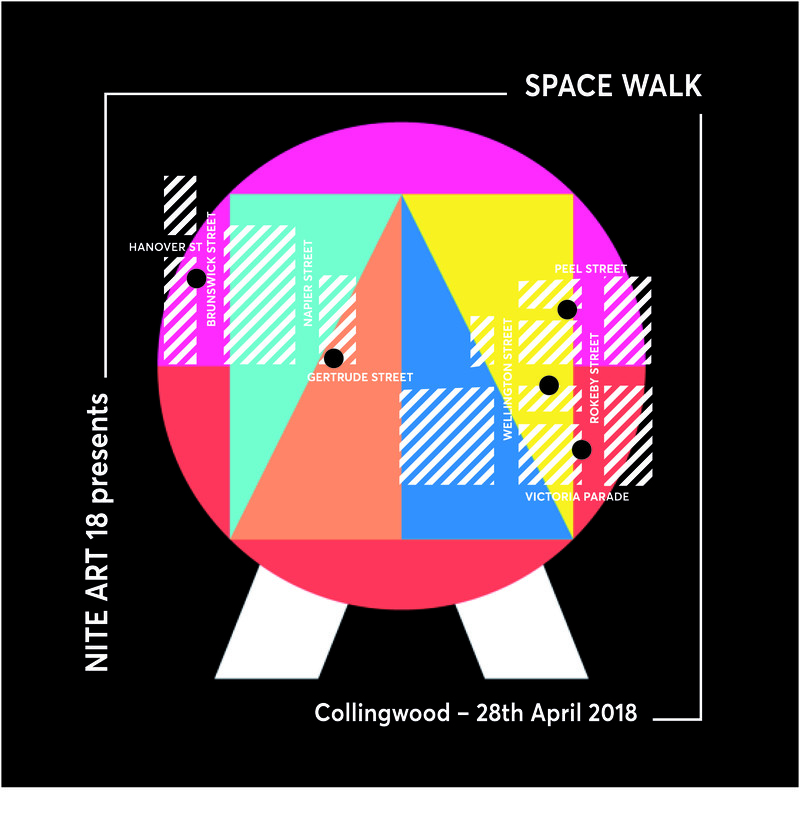
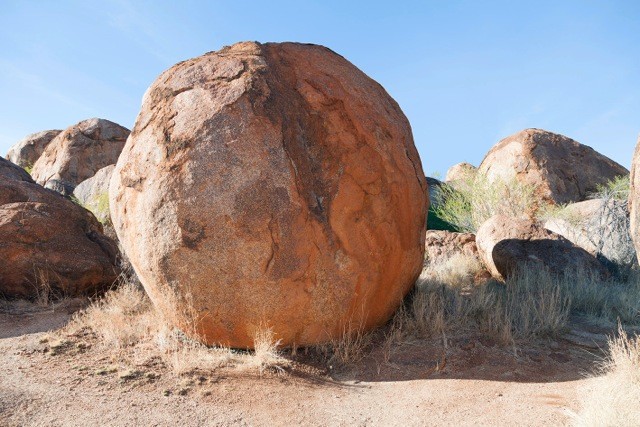
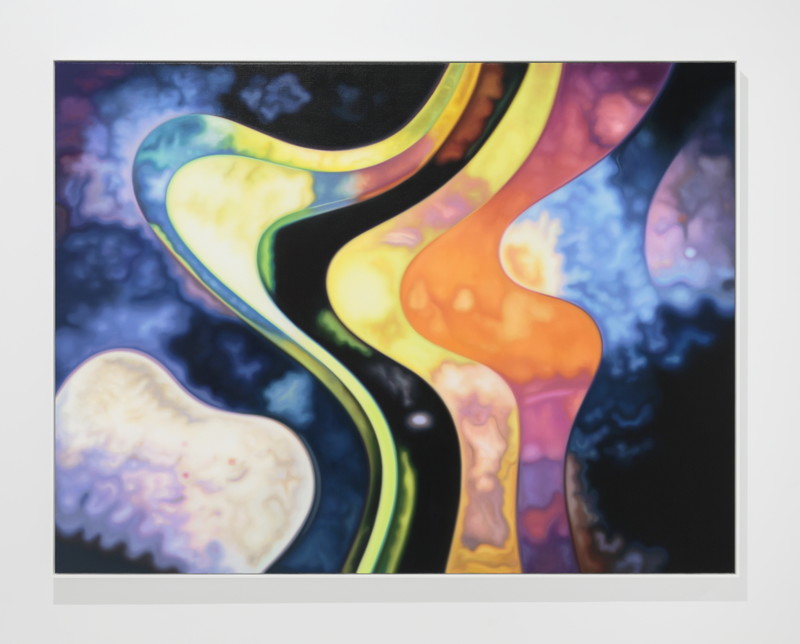
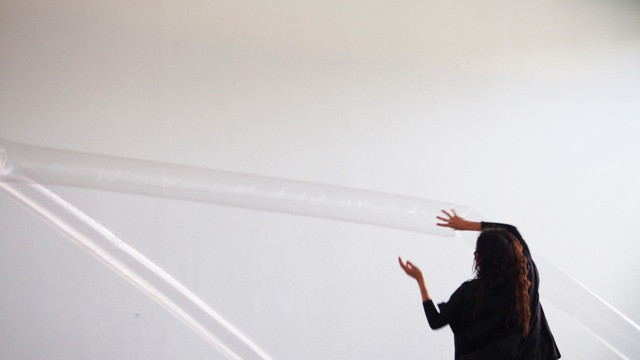
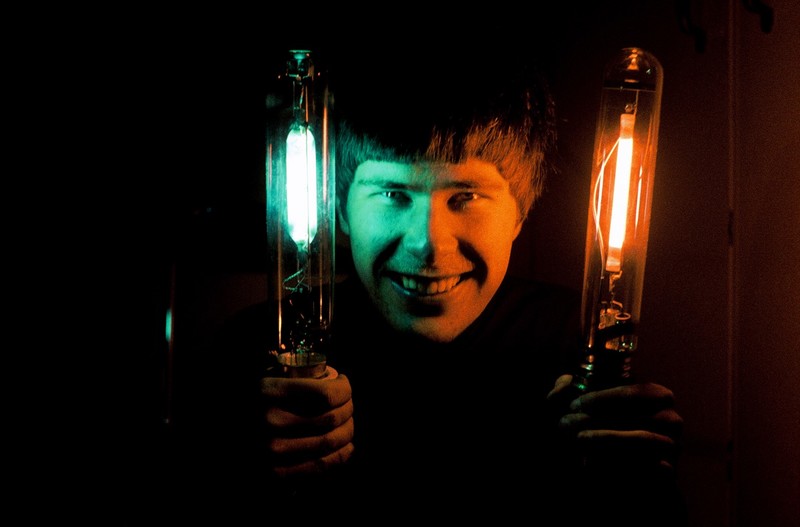
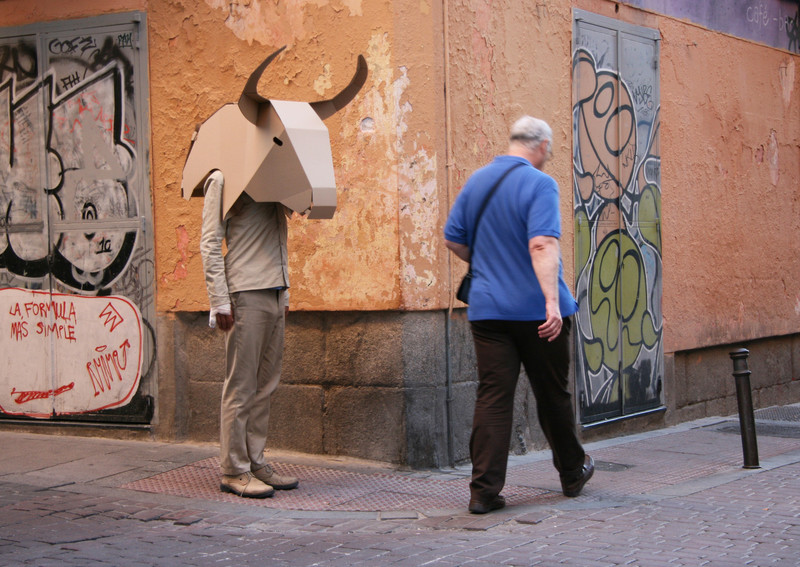
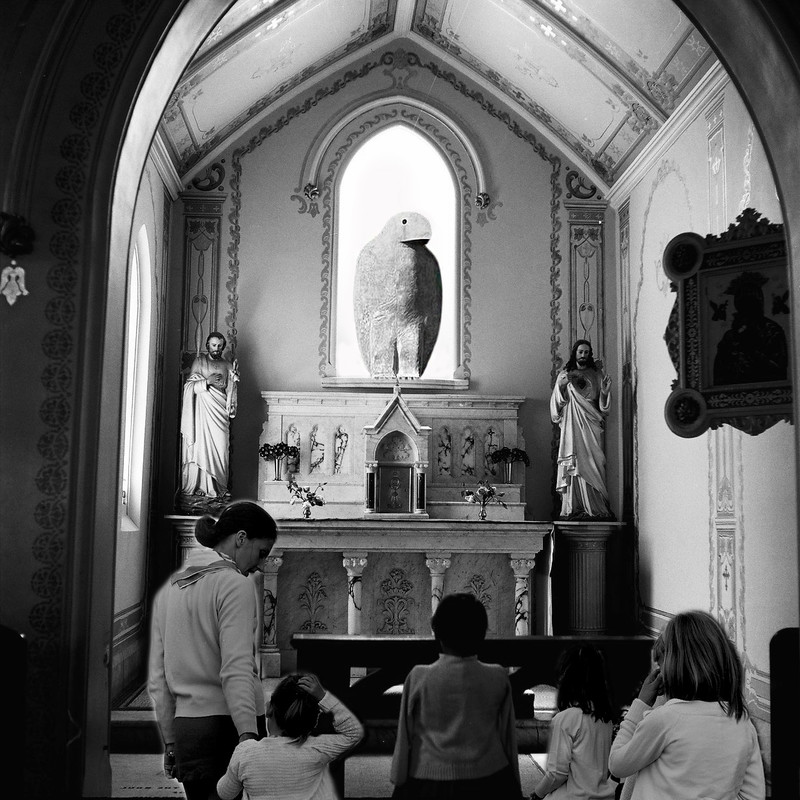
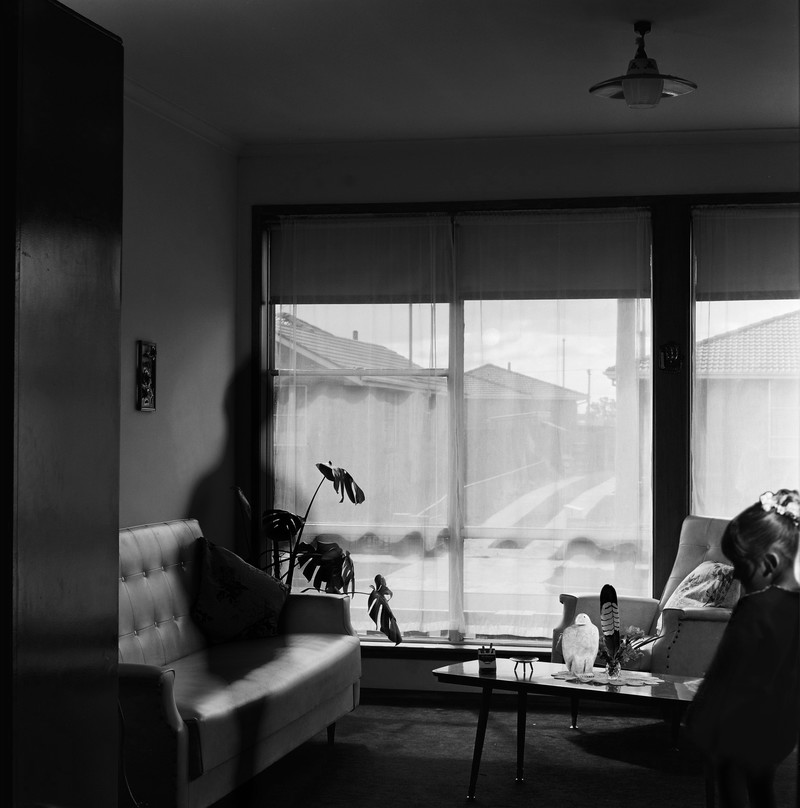
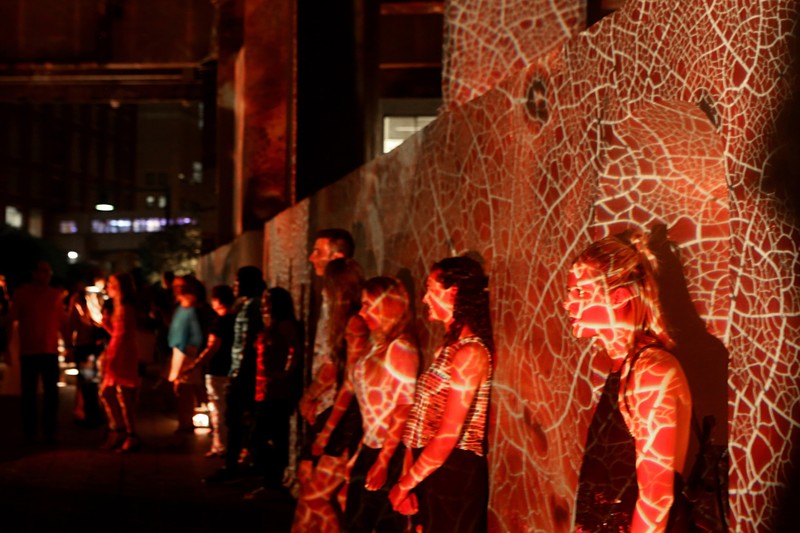
ALL THAT YOU HEAR IS ALL THAT YOU HEARD
You wake up and you check your watch. It’s morning. You know the day is going by but you don’t count every second or minute or hour. Subconsciously, you know exactly how much time is passing but your body clock doesn’t communicate it to you. You look down at your watch again and it’s midday and you say, where did the time go?
The Letter String Quartet reference this subconscious awareness with their site-specific experiment in sound, All that you hear is all that is heard. The quartet consists of multi-instrumentalists Steph O’Hara, Lizzy Welsh, and Biddy Connor who play, sing, and compose for the ensemble. All that you hear… is curated by Rachael Paintin as a part of Chamber Made’s Little Operations stream. You only realise you are in a dream once it reaches its climax and you ask yourself, how did I get here? Similarly, you are only aware of the narrative woven through All that you hear… once the composition has materialised.
The Nicholas Building has been a hub for creative practitioners since its construction in 1926. The building is a time capsule.
The Letter String Quartet give us a clock in the form of a symphony. The first movement is our passage up the stairs from the first-floor foyer to Missing Persons on level four. Nine handheld speakers accompany us on this trip. They recite fragmented stories of the building’s tenants and artists.
We settle into a circular chair arrangement partitioned by three musicians. We are seated in three segments and the handheld speakers are placed in the centre and corners of the room. They play parts of their recordings, providing us with looped stutters reminiscent of a phone call with bad reception. The audio keeps breaking up and is paired with pizzicato stammers of sound from the viola and two violins. Every so often we are given an elongated note. Every so often we are given an entire sentence. Every so often the two overlap. And so the composition begins to materialise.
Sometimes all the instruments sync up and play the same note or hold a sound for the same amount of time. A clock’s three hands overlap at midnight and will overlap ten more times during its twelve-hour rotation. When the instruments start to align I think, what time is it?
The talking takes over once more and I can almost make out whole sentences. A story starts to come together.
“…no dark energy in here. Even when I’m by myself at 2am…no weird feeling.”This tenant talks of the early hours of the morning and mentions dark energy, if only to deny its existence. But I am still thinking of two-am and the presence of ghosts, even though I am told not to. I am thinking whether this part of the composition is its two-am, if we’ve reached its middle-of-the-night.
“…plenty of spirits around still––we have a resident male presence who’s tall and thin…see or hear him rustling…”The Nicholas building has seen people live and die, existing now for almost one hundred years. Previous tenants reside in this space, literally or otherwise.
The Letter String Quartet bring in a fourth mode of sound: tuning forks being tapped and held up to make contact with the instrument’s strings. Each musician has a handful of forks to choose from––different notes on rotation. At first I think of the ghost stories, the spirits and how their eeriness of sound would manifest, and then I think of clocks and their alarms. And then I think of the Nicholas building and how old it is and how, because it is old, it is also reverberant.
“…suck the air out of resin…”A tenant describes his practice and the recording of his voice is distorted, the sibilance of his words amplified, the sucking of the resin taken literally. A fourth mode of sound is introduced: the musicians hiss alongside the tenant. I am reminded of eeriness, but also of age and the fact that on our way up to Missing Persons, I hear the doors creak and the floors squeak.
The cycles of sound are telling us something: that time is integral to space is integral to people is integral to storytelling. The Nicholas building is stationary but still, it moves. We don’t notice this movement until we look down and say, how did we get here?
For more information on The Letter String Quartet and their practice, check out their website.
Lujayn Hourani is a queer Palestinian writer whose recent work uses little stories to ask and answer big questions. With her previous position as the prize manager and current role as an online co-editor, both for The Lifted Brow, Lujayn focuses on works that test what one is allowed to do within the scope of literature, bringing together multiple contexts of (and disciplines for) storytelling. Highlighting the importance of our digital environment, Lujayn aims to write and promote narratives that are both multi-sensorial and left-of-centre. She has been published in Djed Press and will be featured in The Lifted Brow’s issue 44, Overland’s issue 235, Voiceworks’s issue 116 (Pluto), The Lifted Brow Online, and Going Down Swinging.
Lujayn has worked with Nite Art since September 2018 and completed her degree in Creative Writing and Latin American Studies from The University of Melbourne in 2019.
HAYLEY MILLAR-BAKER
Years after her granddad’s passing in 2001, Hayley Millar-Baker inherited the negatives from his photography days. These negatives had been boxed away in the garage for decades. She has used them to begin constructing an archive: images to reference and build upon. It costs $20 to scan one strip of three and there are 150 of them. Little by little, Hayley expands her photo bank.
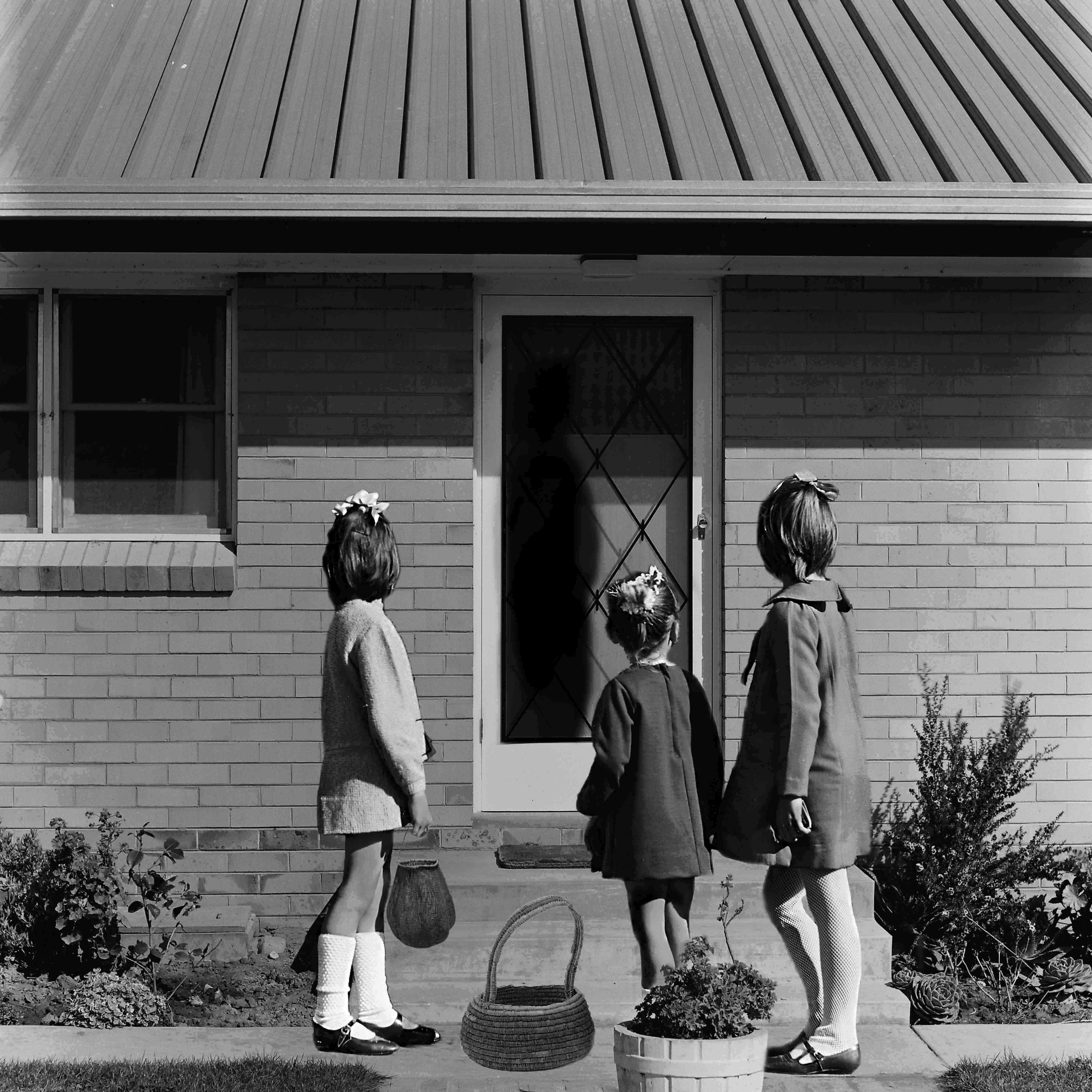
The inherited photobank records her grandfather’s Bachelor of Photography, which he studied sometime between the late 60s and early 70s. It is a collection of photographs of her mum and her aunties pretending to do things. They pretend to do things for the sake of a constructed storyline, with the purpose of a university project. Their Sunday Best is intentional, their actions staged, their settings calculated. This, in essence, is Hayley Millar-Baker’s practice: storylines that aren’t accurate but very well might be––storylines that aren’t accurate but still serve a purpose.
Hayley injects her Gunditjmara bloodlines into these inherited images: she superimposes eel traps onto the lakeside, possums on the stovetop, bunjils on coffee-tables. In 2017 Hayley bought the same medium-format camera that her grandfather had. She uses it to photograph weavings, dillybags, objects to introduce to her given spaces. Hayley documents a place in which settler-
colonialism still happened/is happening, but one where her culture still managed/es to survive it.
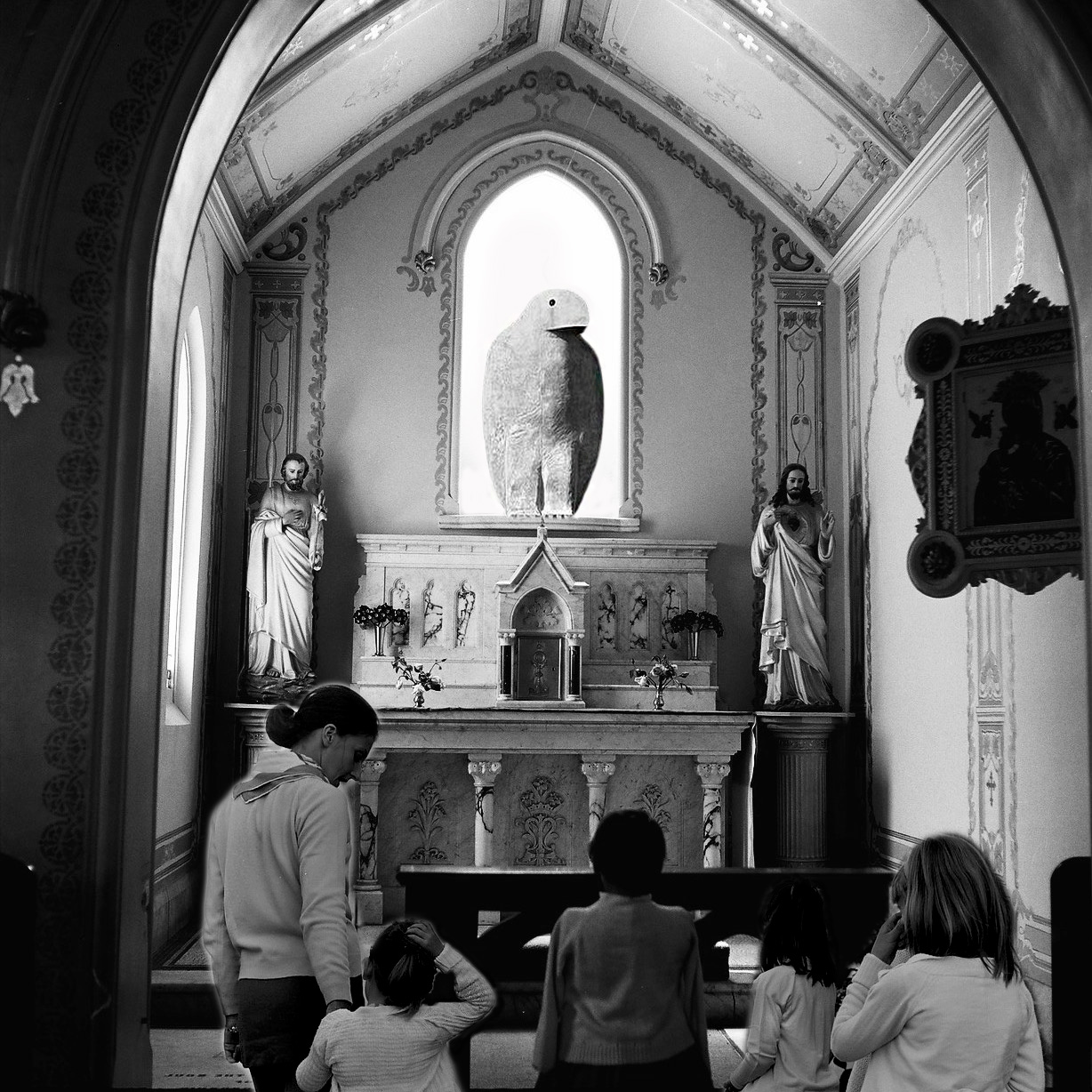
When her collection, Cook Book, first showed in the 2019 John Fries Award at UNSW Gallery, Brisbane artist Dale Harding asked Hayley, who did you make this for? And she had to think about the answer. It’s for us, she tells me. But her mode of fabrication requires delicacy, nuance. There is a certain care that needs to be considered when creating images that could be mistaken for authentic.
Isolated, one of Hayley’s images could be real. Together they assemble a narrative difficult to misinterpret.
At shows, Hayley’s grandmother separates and identifies the different components of an image. She reveals all the stories that make up one constructed history. Hayley’s collections don’t represent a specific area, region, town. Most of the source images take place between Western and East Victoria but still, Hayley breeds an ambiguity that confuses geography. She repeats her insertions: using the same archived cut-out several times over across different images and collections. People have started noticing this repetition––the fabrication of these storylines becoming more and more obvious in the process.
Creating a seamless image is a risk¬¬––it defeats the philosophy of Hayley’s practice: a fabricated history. She makes sure that light sources clash object-to-object. She sizes things awkwardly. She maintains sharp outlines. It’s hard making defects so subtle––it can often become perfection instead. Hayley navigates this tight rope with extreme care. When Hayley takes images of objects, she photographs all the way around something. She collects options of light and angle to ensure a clumsy edit. She’s careful to include conflict in the details. She makes sure collect whole perspectives and bigger pictures, even if she only uses a fraction of them.
Hayley Millar-Baker’s fabricated histories are fragmented for two reasons: (1) because she constructs them that way, and (2) because the documentation of Indigenous histories is fragmented as well. The second reason informs the first. History begins and ends with its documentation. Hayley Millar-Baker’s images aren’t factual but might as well be––her images aren’t accurate but they still serve a purpose: they tell us of a story that could have existed.
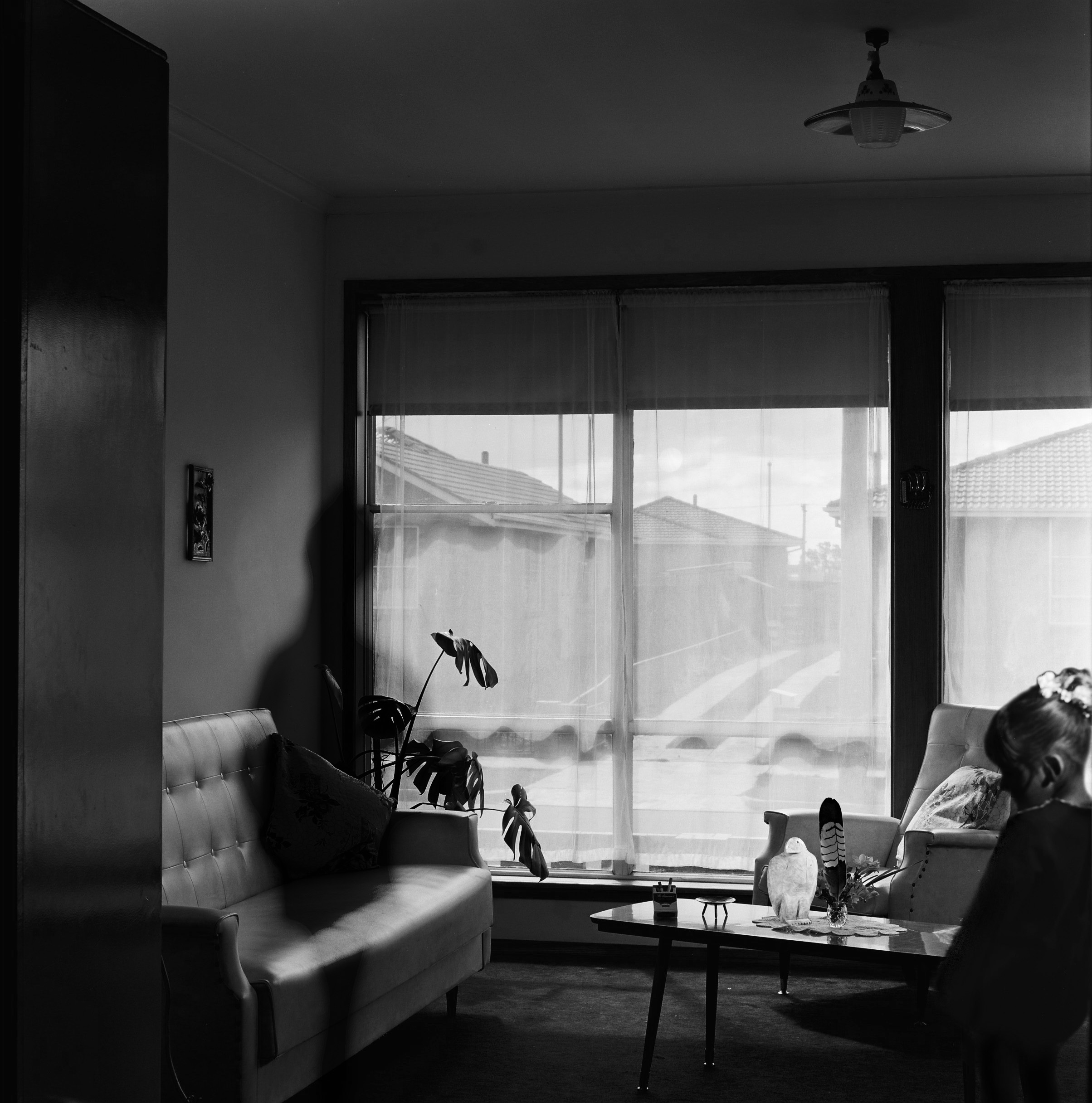
For more information on Hayley and her practice, check out her website.
FABIAN KNECHT — ISOLATION 52°33’44.1”N 14°03’12.8”E
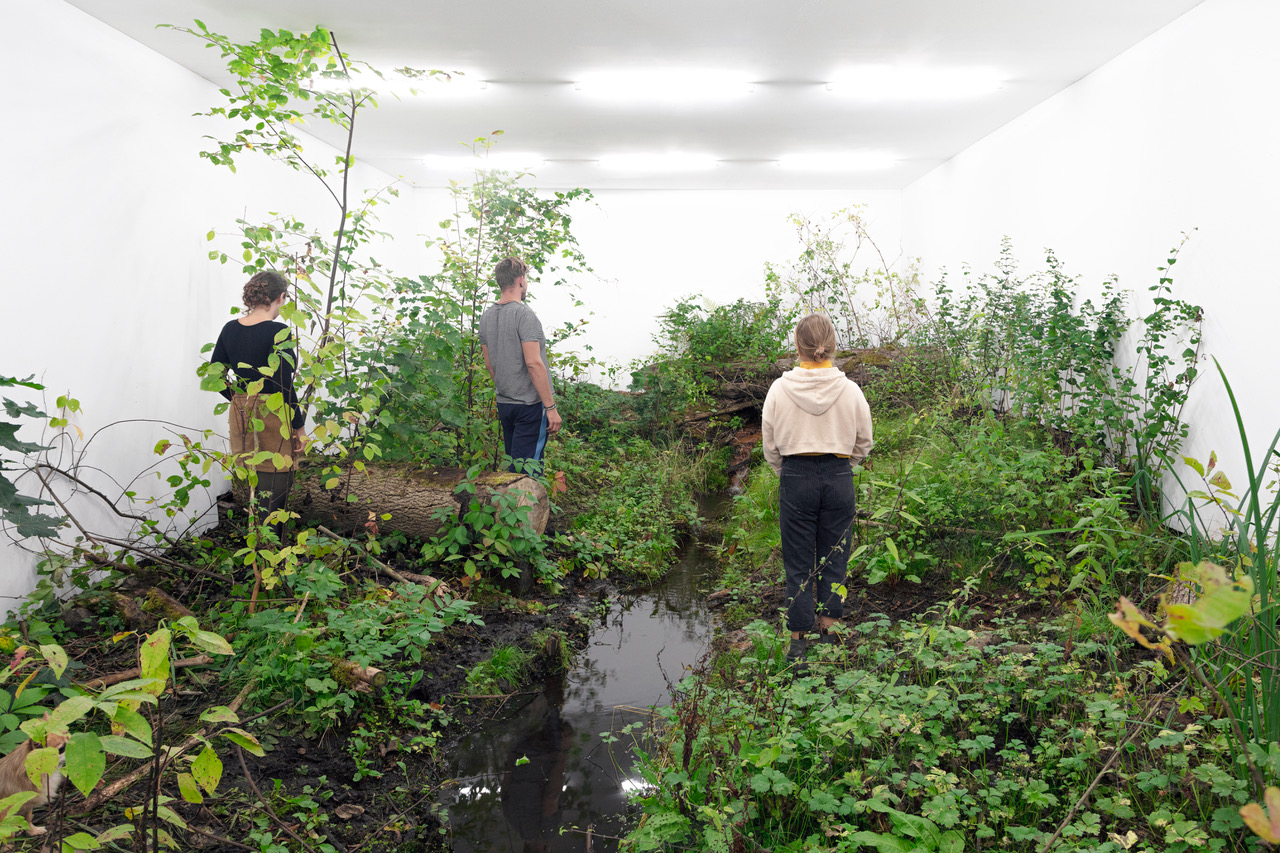
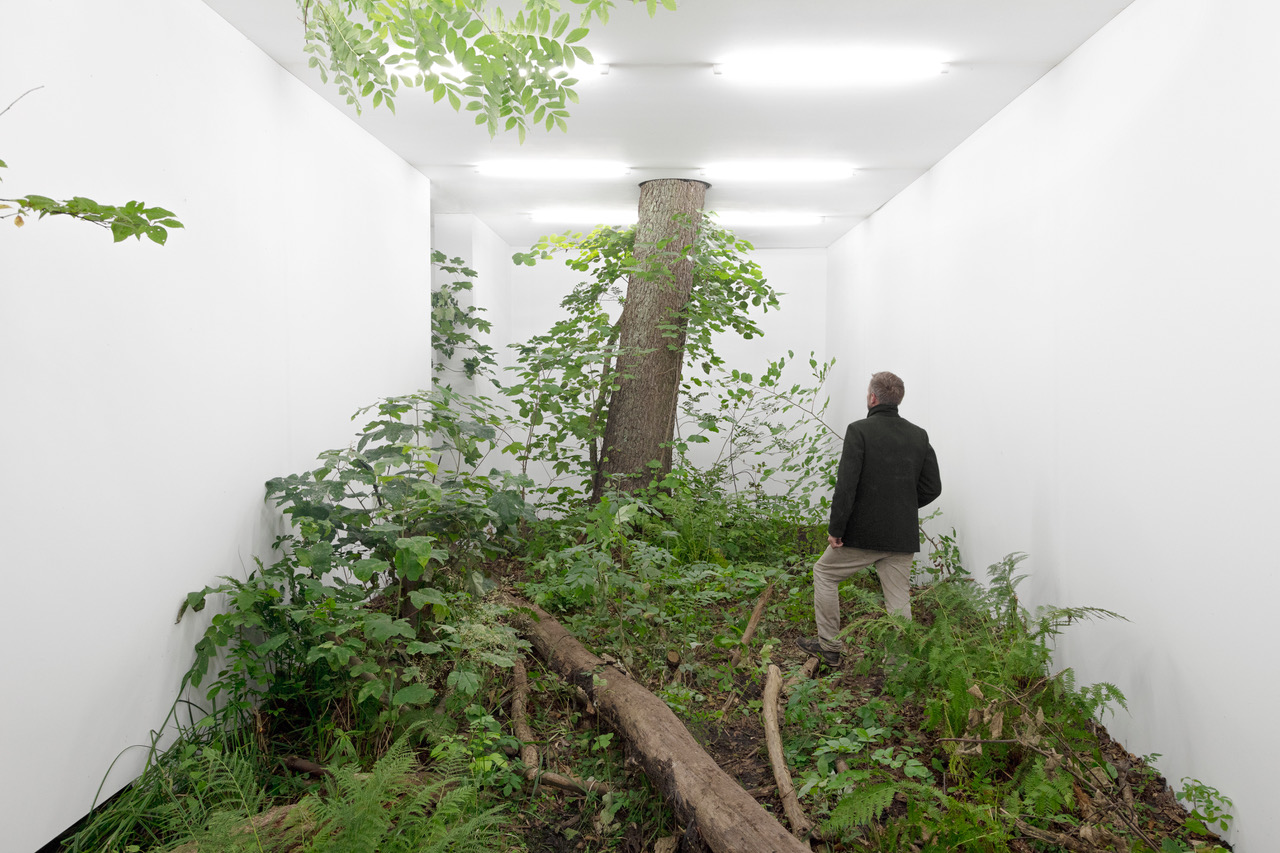
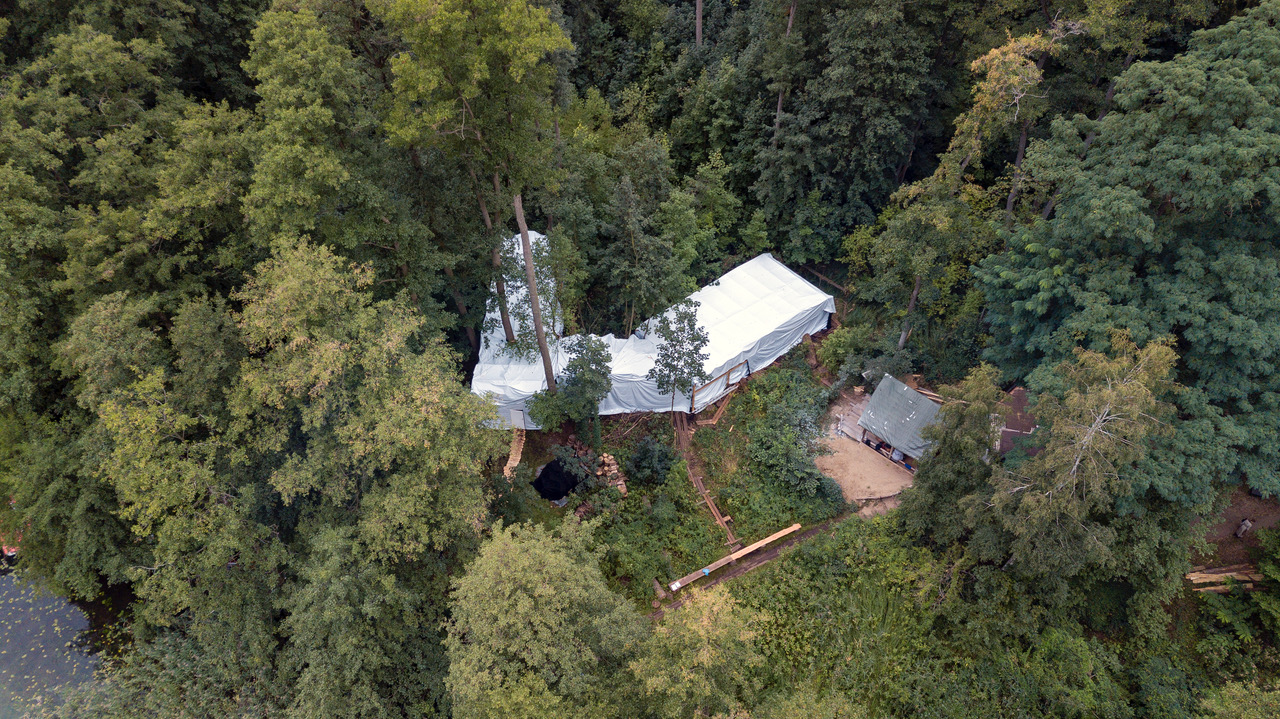
Forest of the Real
Dehlia Hannah | Nadim Samman
At 52°33’44.1”N 14°03’12.8”E, a precise Global Positioning System coordinate provided by Google Maps, the blindfold is removed. As you warily tread the muddy ground, your eyes adjust to bright white fluorescent light. A trickle of water catches your ear. You arrive, surrounded on all sides by windowless white walls, in a truncated thatch of forest. The smell of damp earth slows your pace as you navigate the terrain of fallen logs and low growing shrubs. Venturing beyond the first enclosure, a well-trampled corridor opens onto another white-walled room. The sound leads you along a stream fringed by greenery towards a small waterfall, whose pool offers a rippling reflection of the harsh ceiling lights. Every leaf is thrown into sharp relief against the saturated hues of the forest floor.
ISOLATION by Fabian Knecht is a series of artworks staged within a white-cube gallery space built up around specially selected sites. At first glance, the images appear to photos of galleries filled up with landscape installations. One thinks of Walter de Maria’s Earth Room (1977-present), or Olafur Eliasson’s Riverbed (2014-15), to which Knecht has previously referred in a visual essay about the origins of the series. But in fact, the large-format photographs make of actual ground a figure, like a sculpture in a room, inviting viewers to attend to it with heightened care. At each of the selected sites, a fluorescent-lit white box is dropped atop a rectangular swatch of land—a fragment which, decontextualized from its surroundings, evokes its own set of associations, analogies, desires and anxieties. The boxed scenes vary and trick the eye. A luscious field of wildflowers recedes into infinity in perfect one-point perspective. In another circumstance, the flat ground is strewn with trash. A snow-covered stretch of piled-up ice flow is clearly selected for its resemblance to Caspar David Friedrich’s iconic Eismeer (1823/24). One wonders how far the artist and his crew had to wander the Russian winter in search of that vantage point, how his eye had to squint, and how the camera had to be trained at just the right angle, height, and time of day, to catch the resemblance (without overemphasizing the identity between the scenes). This is not a matter of matching found landscapes to familiar scenes from paintings or historical photographs. In Isolation, we are presented with the workings of a frame by means of the scenes that they enclose.
Indeed, beginning with an isolated fragment of a landscape, the logic of the frame echoes outwards— the structure built around it, the frame of the camera viewfinder, leading to a photograph of its interior; the frame of the photograph (with its own reflective glass surface), now hanging on the white wall of a gallery—whose form is repeated ad nauseum in the temporary architecture of the art world, from fairs and biennales to museum shows. But the mis en abyme runs inward too: in one work from the series, created at a grassy swamp outside Berlin, the box-frame’s fluorescent lights are reflected in the water below. Adding another dimension to the image, this mirror effect amplifies the logic of Isolation, with the swamp’s still water mimicking the photographic enterprise and the image-culture of the gallery world. In Water and Dreams (1942), Gaston Bachelard describes reveries afforded by ponds, lakes and rivers, in whose reflective surfaces the sky itself contemplates its own image. In Knecht’s transfiguration, the sky becomes a ceiling, the sun, rows of fluorescent bulbs; and the water, a photograph recording the self-reflexive narcissism of the gallery space.
Yet Knecht’s re-framing sequence does not end here. Previously, vitrines full of smaller photographs depicted the ‘making-of’ the studio architecture from a distance, so that its exterior walls were shown surrounded by a much larger landscape. Functionally, these behind-the-scenes images reversed the gestalt, rendering the terrain ground again, while turning the built object into a (diminished) figure. The cumulative effect of so many distancing mechanisms destabilizes the viewer’s relation to photographic truth-telling, transforming it into a problem. Or does it? Such destabilization might suggest that Knecht is provoking the viewer to doubt the veracity of everything they are seeing—in the work and the world. If the gallery isn’t real, perhaps neither is the interior landscape. Perhaps it is a digital confection, small-scale model, or terrarium. The spectre of deep fakes, scripted reality, and ‘alternative facts’ casts a familiar chill here. It bears remembering that by its very nature the frame or “parergon is a form which has as its traditional determination not that it stands out but that it disappears, buries itself, effaces itself, melts away at the moment that it deploys its greatest energy.” However, in keeping with contemporary ungroundings of the reality principle at work in mass culture, the pleasing detail and smooth packaging of an Isolation print also swing the other way. It is compatible with an entirely different viewer relation: conveniently, what was once an unpalatable corner of a brownfield site, its rutted dirt and tufts of grass, is now ready to be swallowed in its photographic candy-coating. Which is to say, the viewer can take the apocryphal ‘red-pill’ of the virtual reality culture war, served on a clean white plate, and enjoy the colourful whatever-it-is (shunning the ‘blue pill’ of a harsh encounter reality). The key is that the image is consumable.
Problem/What problem? In setting up a tension between a deeper question and, alternatively, its pleasing sublimation, Knecht’s series stages the conflict between Brechtian episches Theater and its rightward-leaning antagonist, the total illusion of the Wagnerian Gesamtkunswerk. In order to conserve the phenomena that resonate within its walls, the theater’s own architecture must resist exposure.
52°33’44.1”N 14°03’12.8”E
The box is also a shelter. Knecht opened Isolation to visitors for the first time at his solo show at Kunstverein Arnsberg (Radition, 2017), where the mossy remains of a dead tree took centre stage. Subsequently, at Kunsthalle Baden-Baden’s “Exhibiting the Exhibition” (2018), rather than a sprawling landscape in miniature, visitors confronted with a single closely cropped tree trunk. With this ‘live’ iteration, landscapes are transformed into the Great Indoors. Knecht’s newest variation of Isolation
—his largest yet, incorporating three connected galleries for a combined 180 sqm—is set within the Märkische Schweiz national park. Just across the lake is the Berthold Brecht house, whose one-time owner’s contribution to drama foregrounded the perspectival nature of audience experience, creating works that encouraged viewers not to suspend their disbelief in what they were seeing (as part of the episches Theater tendency). It is, one imagines, with him in mind that Knecht’s Buckow installation deploys its own Verfremdungseffekt. Until this moment, despite a critical edge, the series has mostly performed at a degree of distance from the audience. The landscape-figure remains fully isolated within three gallery walls and closed in by the fourth wall of photographic re-presentation. By virtue of their medium, even the supplementary ‘behind the scenes’ photos (which reverse the perceived enclosure) operated at a distance. In Buckow, Isolation categorically puts the viewer into the picture, both figuratively and literally. Ironically, through this embrace of epic ‘total installation’ (which completely surrounds the viewer), Knecht’s spectacular project stages an exit from Wagnerian stgesamtkunstwerk and its 21 century counterpart, the filter bubble. Indeed, dramatic emphasis
proceeds from the visitor literally taking leave of art(ifice)—moving through the artwork out into the world.
As mentioned, during the vernissage visitors are blindfolded and led into the constructed space—dropped into the architecturally framed landscape in media res, without having seen the structure or its surroundings from the outside. This is quite the opposite of a normal encounter with an artwork, where one approaches a proposed world and attempts, imaginatively, to penetrate its milieu. Here, after the blindfold is removed, the visitor explores the inside of a frame wherein everything is offered up for pleasure and contemplation, whether or not they are amendable as such in reality. (Perhaps mud is getting into your shoes; perhaps you oppressed by the white lights, or harassed by insects.) Now comes the crucial moment: however the teleported visitor relates to the situation, they must eventually emerge from it, into a beyond. The must leave the structure. In a reverse telescoping effect, it seems that Knecht’s box frames everything outside it too. Every tree and puddle surrounding the structure become benefactors of a heightened psychological investment in twigs, leaves, etc. How long will it take for this uncanny perspective on the world beyond the artwork to wear off?
It must be noted that Buckow is also known for guided, intensive experiences of terrain that are meant to be curative. Indeed, it is home to a number of paths designed in accordance with the naturopathic philosophy of the eighteenth century monk Sebastian Kneipp, who espoused the virtues of bare-foot walking through ice cold water, dewy grass and mud. This type of practice of is less about the appreciation of nature or landscape (as an object of value) than it is about being physically and spiritually transformed by it. One might ask after the contraction of Kneipp and Brecht, how many steps can the visitor take away from the white box before they lose that special mode of attention proposed by Knecht’s cure?
Dehlia Hannah (b. 1978) is a philosopher and curator, currently Mads Øvlisen Postdoctoral Fellow at the Department of Chemistry and Biosciences at Aalborg University-Copenhagen; an affiliate of the Laboratory for Past Disaster Science at Aarhus University; and the School of Earth and Space Exploration at Arizona State University. She holds a Ph.D. in Philosophy from Columbia University, with specialisation’s in philosophy of science and aesthetics. he deploys her philosophical training to curate transdisciplinary research projects and exhibitions including Placing the Golden Spike: Landscapes of the Anthropocene (2015), Atmosphere and Place (2015-17), and An Imaginary Museum of Philosophical Monsters (2018-20). Her most recent project, A Year Without a Winter (Columbia University Press, 2018), revisits the literary and environmental aftermaths of the 1815 eruption of Mount Tambora through a transdisciplinary thought experiment in order to reframe contemporary imaginaries of climate crisis. http://dehliahannah.com/
Nadim Samman (b. 1983) is a philosopher and art historian. He read Philosophy at University College London before receiving his PhD from the Courtauld Institute of Art. He co-founded the 1st Antarctic Biennale (2017) and the Antarctic Pavilion, Venice (2015-). In 2016 he curated the 5th Moscow International Biennale for Young Art and in 2012 the 4th Marrakech Biennale. Other major projects include Treasure of Lima: A Buried Exhibition a unique site-specific exhibition on the remote Pacific island of Isla del Coco, and Rare Earth at Thyssen-Bornemisza Art Contemporary, Vienna. In 2014 Foreign Policy Magazine named him among the ‘100 Leading Global Thinkers’. http://www.nadimsamman.com/
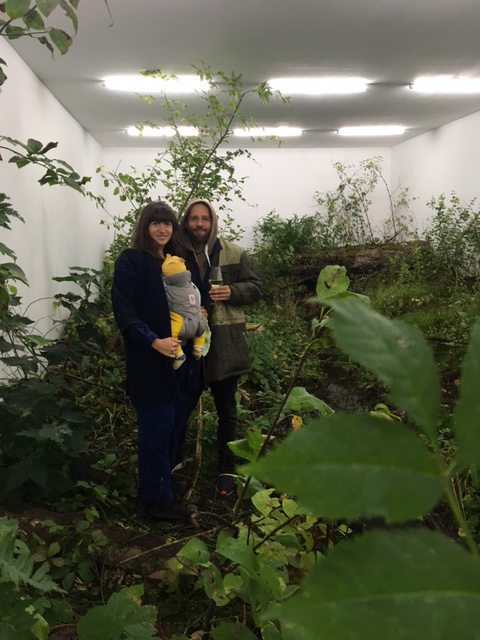

THE RESULTS WILL SHOCK YOU
Carly Stone, Chantel Eagle, Lujayn Hourani, Max Plumley
In April, I was introduced to a brand-new social circle, one that had its own self-constructed idioms, in-jokes, nebula of references. In the handful of weeks that followed, I listened in. I kept myself attentive at bars, house parties, dinners, and I compiled qualitative data until I reached the point where I could also engage in the idioms, in-jokes, and references. This was me being fed information and testing their limits. It was me growing feelers for what I can say and how it will be interpreted. It was me constructing a new self.
Algorithm is intrinsic to human socialising. It is a ‘choose your own adventure’ type system that can only go as far as our options do. If X then Y, with both letters wholly limited to just five-or-so sentences. We spend our time exploring Xs, expanding our flowchart to as many Ys as possible. THE RESULTS WILL SHOCK YOU is an event that simulates the collection of Ys in order to construct the self. It shows us the consequences of algorithmically determining sentiment: the self is an assembly of neurons, independently collected and then yoked together. Because of this, we are constantly missing one another – imposing our own projections onto others’ communicative intimacies and interacting with those instead.
THE RESULTS WILL SHOCK YOU is a two-part collaborative project, the first of which begins with an installation at Bar SK on 22 August. Commissioned by The Lifted Brow, THE RESULTS WILL SHOCK YOU consists of three designed plant-bots with instructions on how to treat them:
- “say nice things to this plant”
- “say mean things to this plant”
- “ignore this plant”
These three bots have been programmed to (1) receive verbal/text input and (2) determine the sentiment as either (a) positive, (b) negative, or (c) neutral. In response to the sentiment, the bot will thrive, wilt, or remain the same. In the above algorithmic list, the numbers are our Xs and the letters our Ys: both confined, both representing our very limited options when constructing the social self.
The data collected on the night will be used to inform the second half of the project: a written piece consisting of a set of short transcripts: (1) literal transcript of text conversations between team-members; (2) IRL (philosophical) conversations between team-members paraphrased and ‘transcribed’; (3) composed hypothetical conversations between ‘good plant’ and ‘bad plant’. These transcripts function as bookends to the hypothesis on the self and the piece in its entirety will be published in The Lifted Brow’s themed issue 44: Digital Intimacies. What, if any, is the difference between AI interactions and human interactions?
Follow the first part of THE RESULTS WILL SHOCK YOU through the Facebook event: https://bit.ly/31zrsZD
Lujayn Hourani is a queer Palestinian writer whose recent work uses little stories to ask and answer big questions. With her previous position as the prize manager and current role as an online co-editor, both for The Lifted Brow, Lujayn focuses on works that test what one is allowed to do within the scope of literature, bringing together multiple contexts of (and disciplines for) storytelling. Highlighting the importance of our digital environment, Lujayn aims to write and promote narratives that are both multi-sensorial and left-of-centre. She has been published in Djed Press and will be featured in The Lifted Brow’s issue 44, Overland’s issue 235, Voiceworks’s issue 116 (Pluto), The Lifted Brow Online, and Going Down Swinging.
Lujayn has worked with Nite Art since September 2018 and completed her degree in Creative Writing and Latin American Studies from The University of Melbourne in 2019.
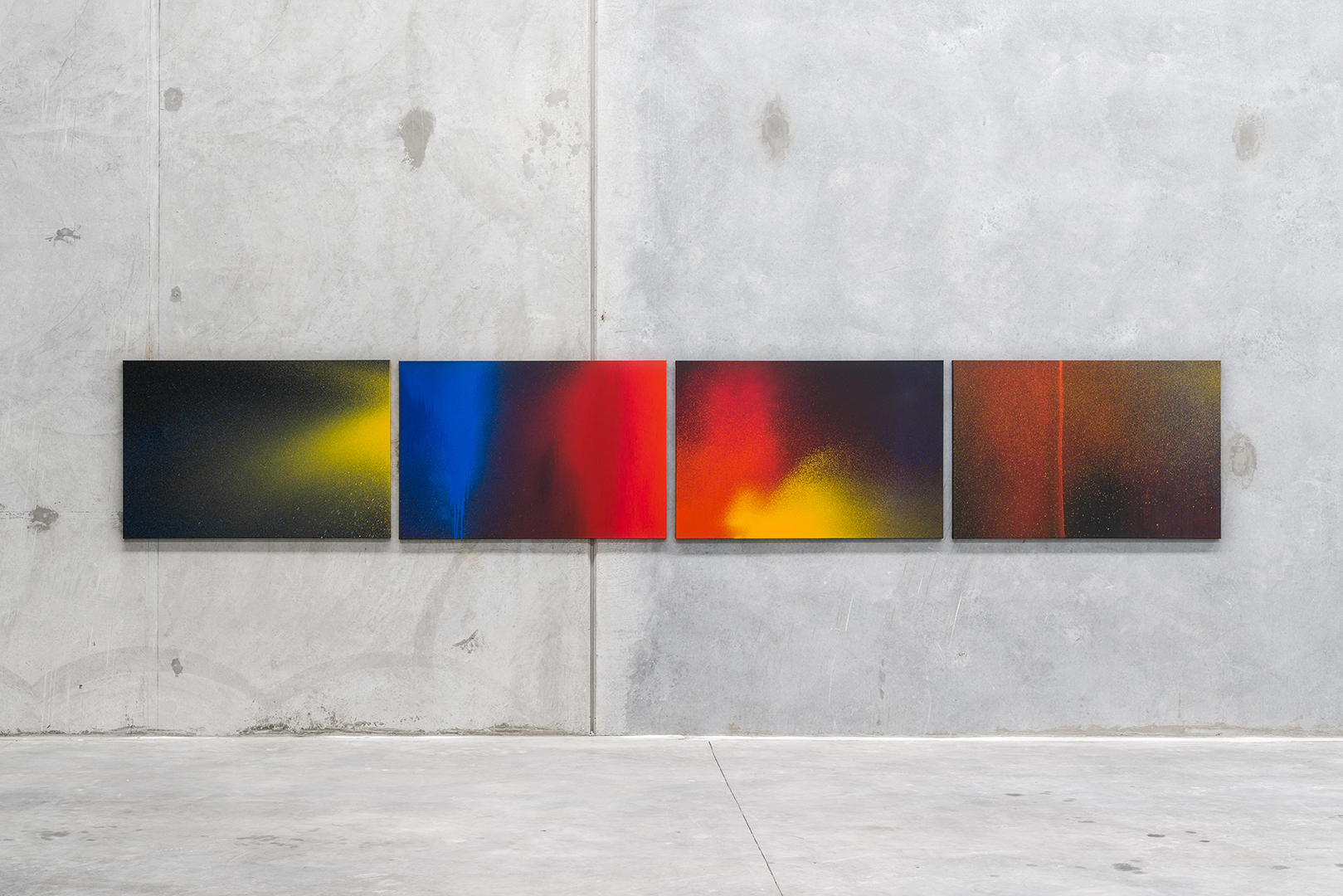
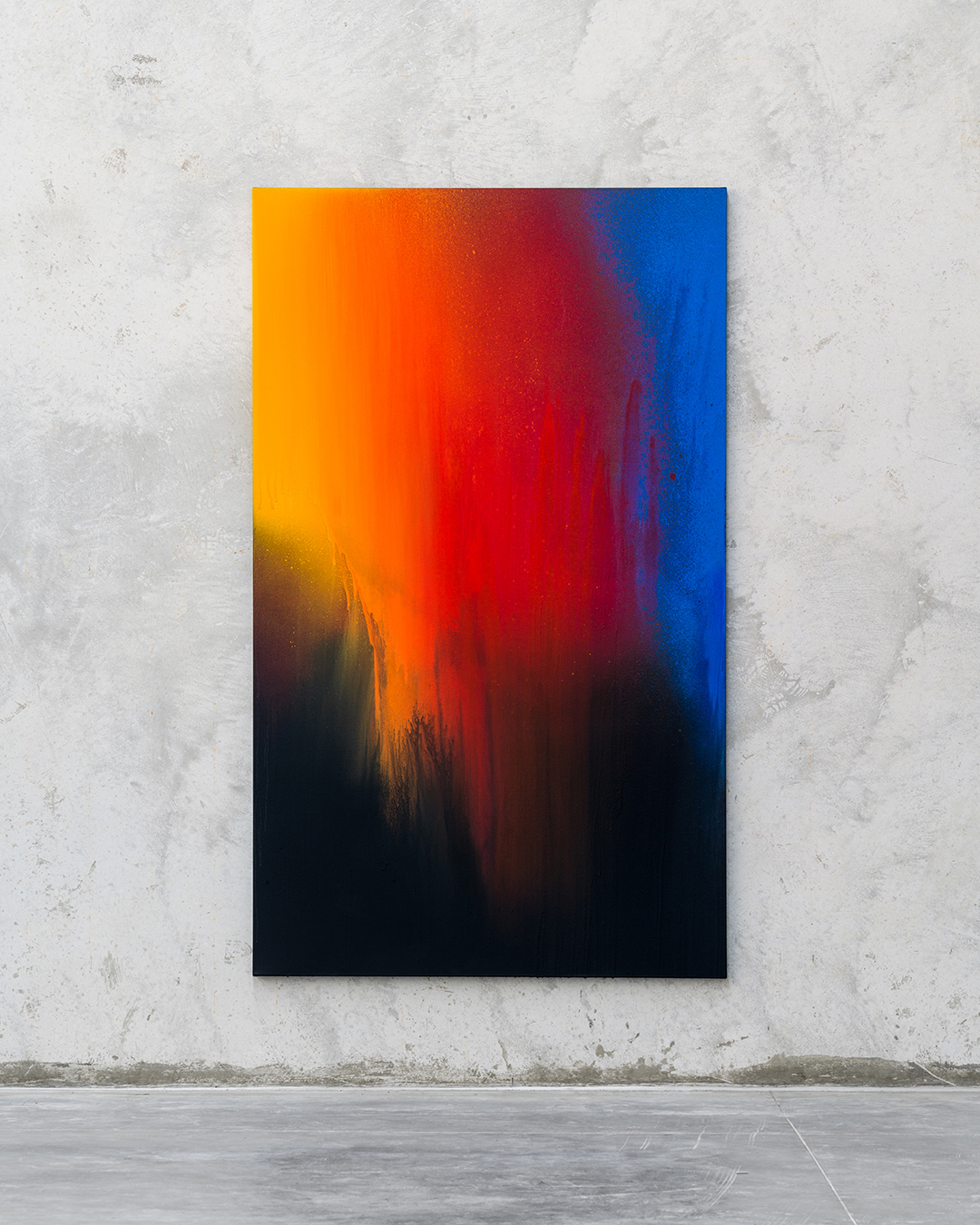
ASH KEATING
At the age of twenty-one, Ash Keating goes to Canberra as an experimenting artist. Rosalie Gascoigne has passed away, but her grandson takes him to her studio. He sells Ash paints: ultramarine, black, and yellow, which he uses to paint a local bridge. The work is undocumented and now long gone.
During his visit to Gascoigne’s studio, Ash comes across bit-boxes of what would have pieced together new works had they been given the chance. He is given insight into something not yet created; into the creative process of making something out of nothing. Following the visit, he paints a bridge blue, punctures aerosol spray cans with a screwdriver, and sprays and drips yellows and blacks over the ultramarine. This is before fire extinguishers become a part of his practice. Creating this work, Ash is not performing. There is no spectacle to his work: no one there to tell people, this happened and no photos taken for Ash to tell people, this happened.
After ACCA’s Barbara Kruger exhibit in 2005-2006, original parts of the installation are dismantled and deposited in a skip behind the gallery. As a VCA honours student, Ash uses the found remnants in his own work: he too starts making something out of nothing. The revival of waste continues to be a part of his practice, this time escalating to a controversy that causes him to become a spectacle to the public for the first time. His art is documented as something that happened. From here on, Ash’s work is inscribed with themes of performativity.
The issue is that imposing spectacle onto the artist’s practice strips them of autonomy. With spectacle comes expectation and with expectation comes servitude. In the past, Keating has dealt with a work being finished long before his performance is due to end. In some cases, he has been compelled to value public interest over the integrity of a piece, painting past the point of completion for the benefit of the performance. Keating’s Love Letter to a Very Rocky Creek (Hume Response) exercises the restraint not granted during public performances. The bursts of yellow come last and happen quickly, with Ash making sure to recognise the work as finished before it’s too late. Love Letter to a Very Rocky Creek (Hume Response) relates back to his painting the bridge in Canberra –– video and photo documentation only capture the end, where he nails the completion of the work, and he revives the colours used unplanned twenty years ago.
The work in Hume is not a spectacle, and we are given very little insight into his process: a video less than a minute long and a collection of paintings in his new Coburg North studio that represent fragments of the installation at large. Keating’s canvas paintings mimic how the colours in Hume interact. He uses an airless sprayer to mimic the motions of the fire extinguishers used in Hume. He puts a fan inside his studio and switches it on to mimic the wind’s interference with his Hume process. The Hume wall and the Coburg North canvases are a synergy between the inside and the outside worlds, the concrete walls paralleling to a tee the inside of the building in Hume.
Working on that bridge in Canberra, Ash Keating used whatever paint he could get his hands on: paint bought from Rosalie Gascoigne’s grandson’s bulk collection. It was cheap and accessible. His practice is still very much about waste and reviving it. A lot of the paints he uses today were acquired after Masters Home Improvement was closed down and desperately trying to clear their stock. Of course, there’s also Ash Keating’s use of fire extinguishers –– at the end of their timeline, Keating gives purpose to something otherwise obsolete and in doing so, makes a metaphor of his practice: making something out of nothing.
Lujayn Hourani is a queer Palestinian writer whose recent work uses little stories to ask and answer big questions. With her previous position as the prize manager and current role as an online editor, both for The Lifted Brow, Lujayn focuses on works that test what one is allowed to do within the scope of literature, bringing together multiple contexts of (and disciplines for) storytelling. Highlighting the importance of our digital environment, Lujayn aims to write and promote narratives that are both multi-sensorial and left-of-centre. They have been published by Djed Press, and will be featured in The Lifted Brow’s two forthcoming issues and Overland’s issue 235.
Lujayn has worked with Nite Art since September 2018 and completed her degree in Creative Writing and Latin American Studies from The University of Melbourne in 2019.
Photography by Dan Preston
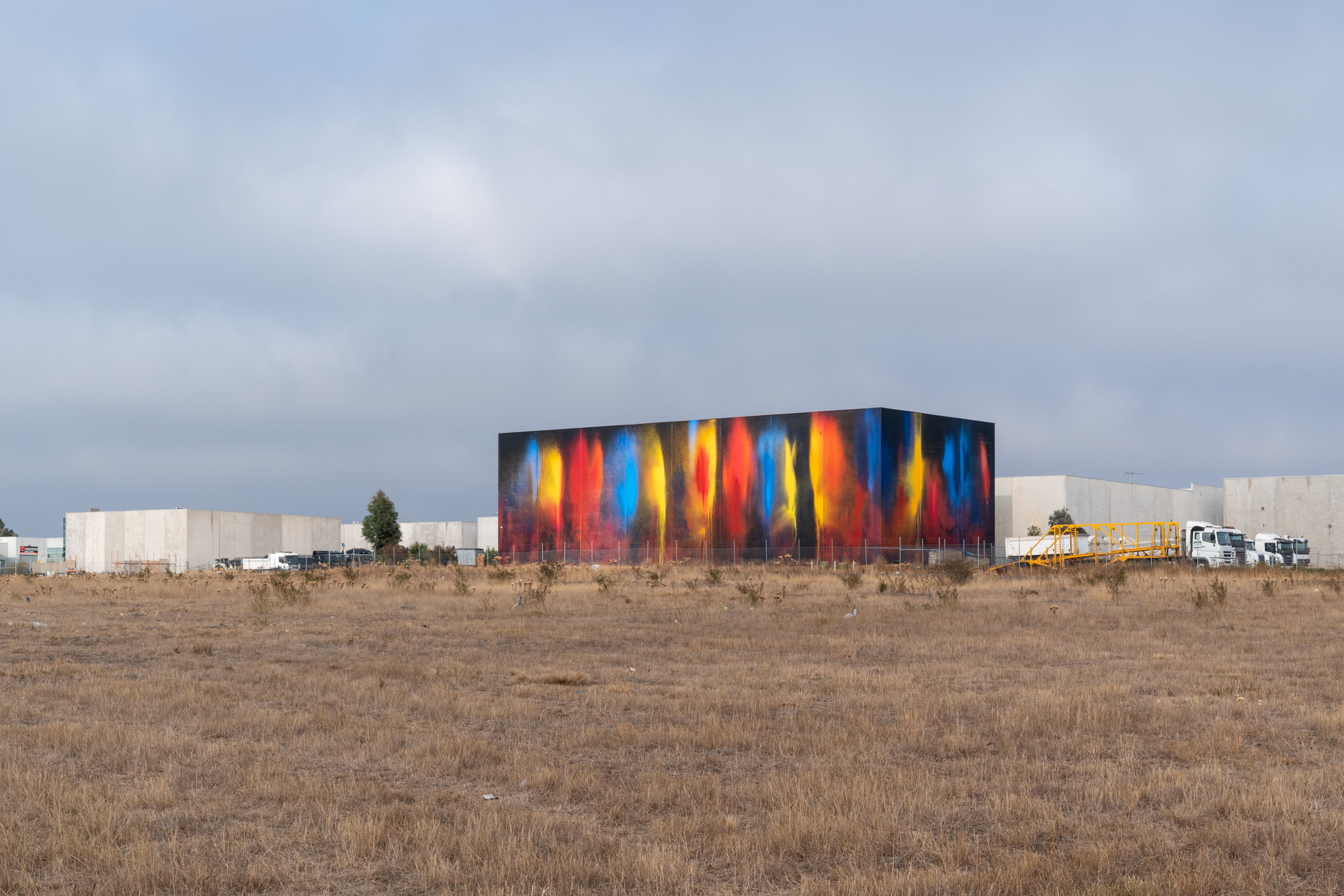
NITE ART 18 PROGRAM
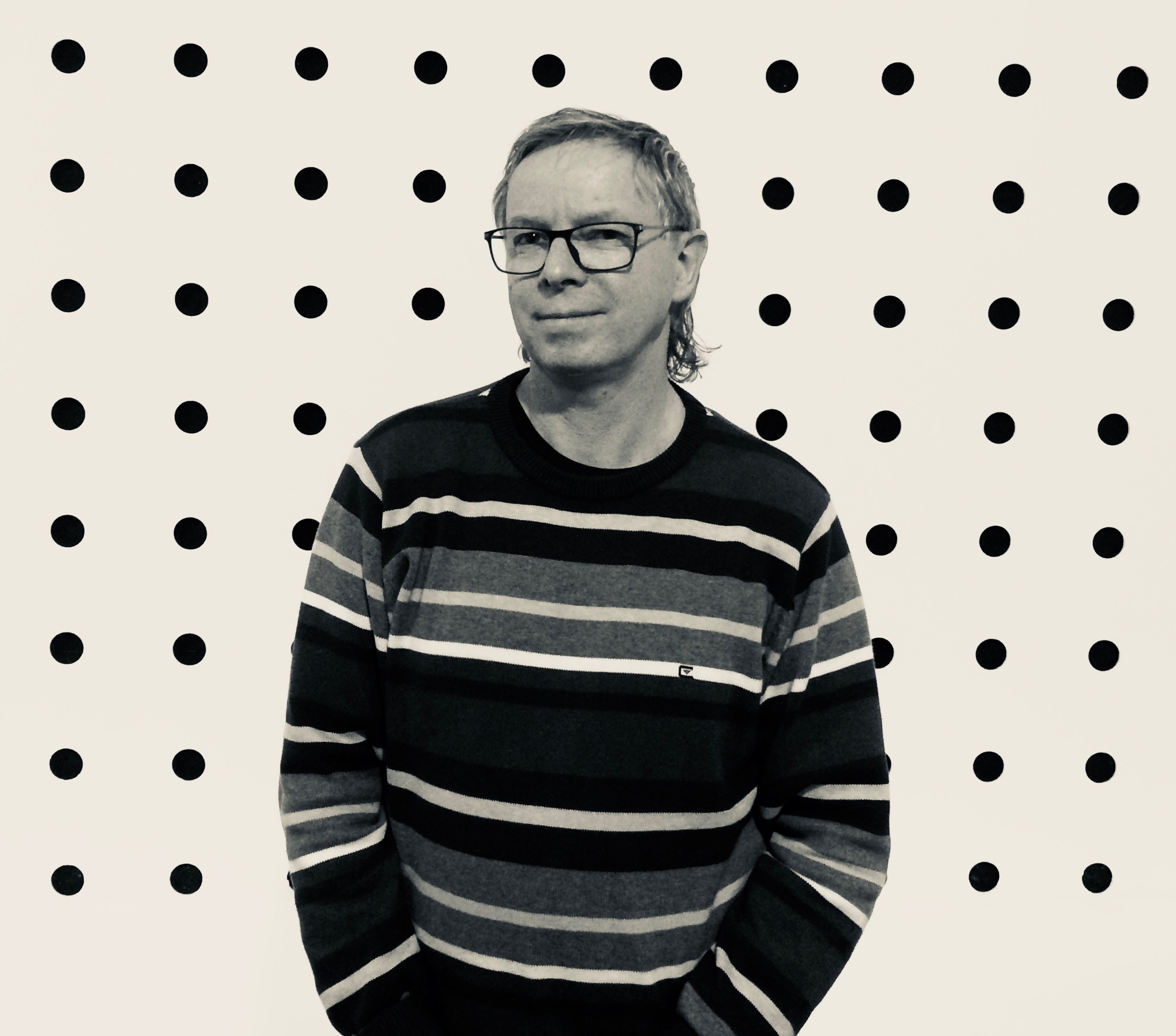
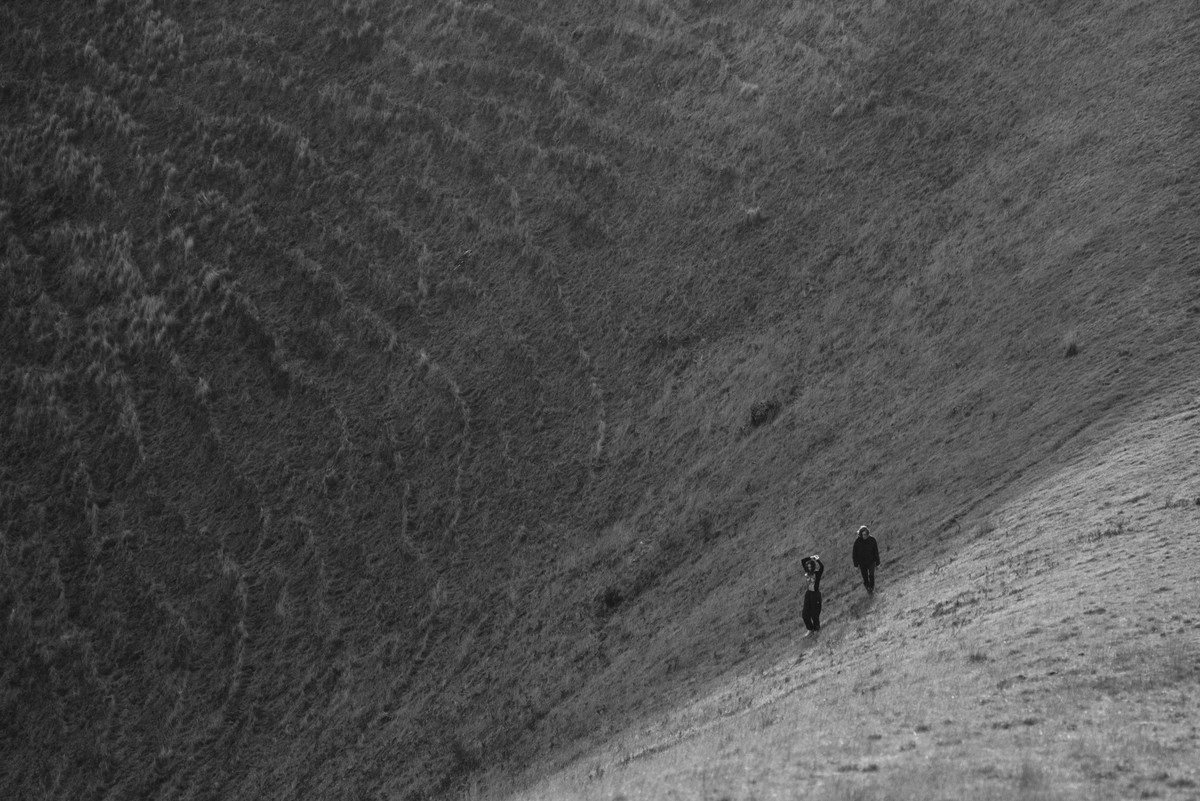
Current Transmissions: David Chesworth and OK EG at the Grainger Museum - Thursday 23 August 7-9pm
Nite Art invites you to the Grainger Museum up late in a celebration of the pioneers of Melbourne’s experimental electronic musical scene.
Join us on the 23rd of August for ‘Current Transmissions: David Chesworth and OK EG’, a collaboration between the Grainger Museum, Liquid Architecture, MESS Ltd and Nite Art.
View Synthesisers: Sound of the Future after dark with curator Heather Gaunt leading an immersive walk through, beginning at 6.30pm.
Then, from 7pm–9pm the evening will feature a very special performance from David Chesworth and OK EG.
Chesworth is the composer of highly influential and widely regarded 70s album ‘50 Synthesizer Greats’, featuring 37 tracks of minimal synth investigations. He was a key figure in the world of digital synthesisers and sound art in Australia in the 1970s. In 2017, Chesworth added post production effects to videos from ‘50 Synthesiser Greats’, combining audio and video synthesiser works in unique montages made on the EMS spectre synthesiser.
OK EG will present an experimental synthesiser composition from MESS Ltd’s 1971 collection. OK EG are a Melbourne based project featuring Lauren Squire and Matthew Wilson, generating spaces between hypnotic polyrhythms and lush ambience through the mixing of experimental music and visual art. They have performed at Dark Mofo and been mastered by Italian techno legend Neel.
The event is part of the Grainger’s exhibition Synthesisers: Sound of the Future with the collaboration of MESS Ltd. The exhibition features unique artefacts from the Electronic Music Studios (EMS) of London, and anti traditionalist video art produced by key figures from the 1970s, a vibrant time of creativity and exploration of experimental music in Australia.
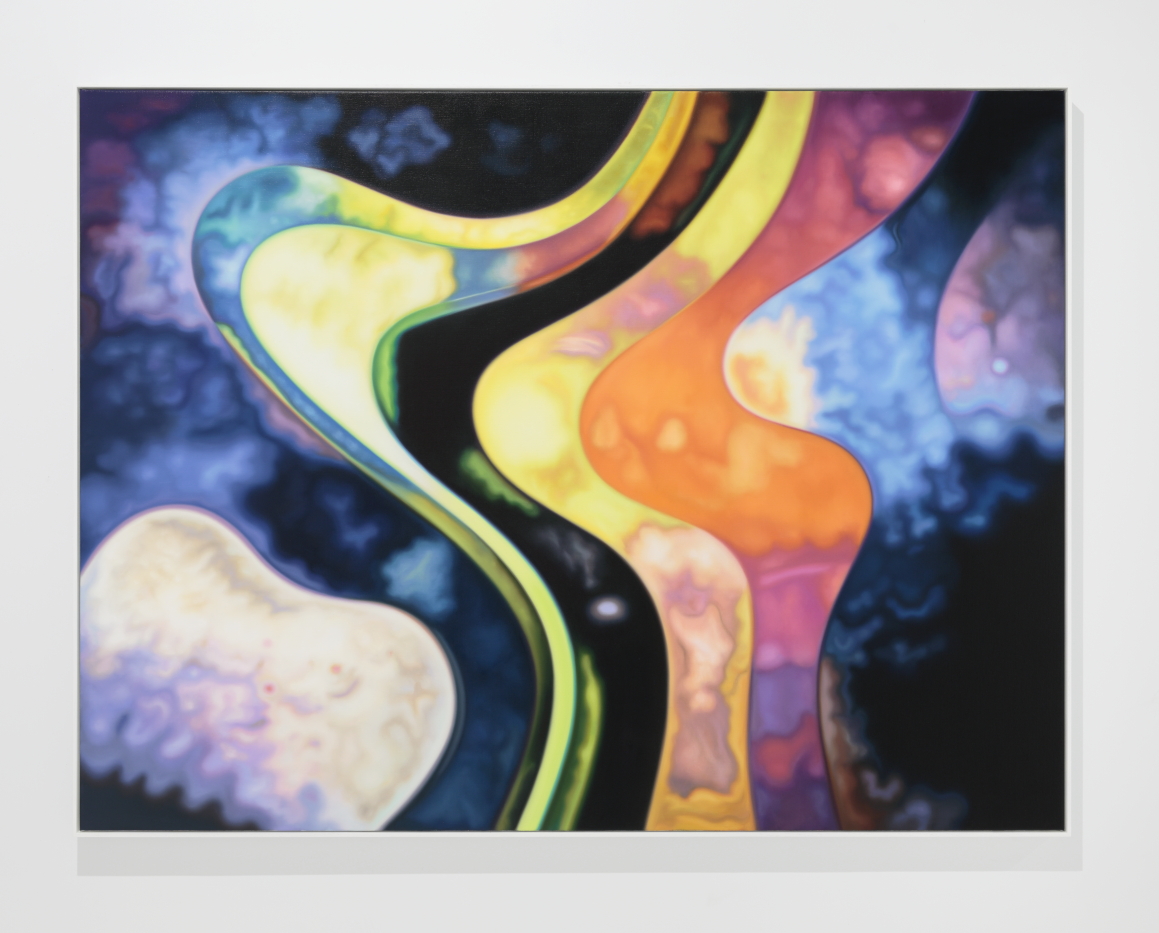
ARTIST STUDIO VISIT - STEPHEN GIBLETT - Thursday 19th July 2018 6.30-7.30pm
Nite Art presents the second of our artist studio visits – ‘New Works’ by Stephen Giblett.
This event encourages audiences to experience art in its raw context, where ideas are tested and materialise. Encounter the artist’s work in its liminal stage between conception and execution.
Meet the painter, Stephen Giblett in a conversation with Fort Delta Gallerist, Andy Gomez from 6:30 - 7:30pm on Thursday the 19th of July. Preview new work for the forthcoming SPRING 1883 fair.
Since graduating from Monash University in 2003, the work of Stephen Giblett has been exhibited both internationally and nationally, with the artist presenting in the creative centres of Sydney, London, Paris, and Athens. In 2013, he was a finalist in the Gold Coast Art Prize amongst notable Australian artists such as printmaker Rona Wood, accompanying numerous other awards from 2010 to 2013. Giblett’s involvement in exhibitions such as ‘Plume’ at the Gippsland Art Gallery (2012), ‘Low Fidelity’ at Anna Pappas Gallery (2013), as well as ‘New Paintings’ and ‘Other Paintings’ at Fort Delta in 2015 and 2016, have elevated the artist’s painted works to prominence, with numerous pieces being held in both public and private collections.
To take part in the sequel to Stephen Giblett’s inaugural solo exhibition from earlier this year, we meet at the historic Nicholas Building, a significant creative hub in the Melbourne art world and city’s cultural landscape.
This small group experience is a ticketed event aimed at supporting the artist. Tickets are $20.00 per person.
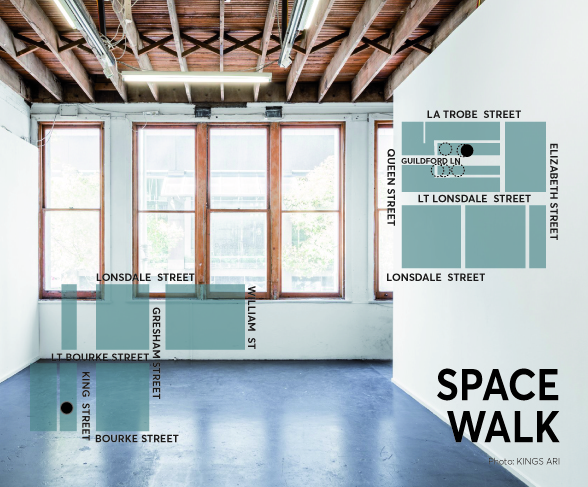
SPACE WALK Art Lost and Found in Transformation on June 16th 2018 1.30-3.30pm
Nite Art presents SPACE WALK: Art Lost and Found in Transformation. On this third walk in a series led by emerging curator Rachael Paintin, we explore the ever-transforming and ephemeral landscape of contemporary art spaces.
We meet at KINGS Artist-Run. Formed in 2003, KINGS is communally driven by a collective of artists, writers, curators and academics that provide a platform to explore, interpret and participate in discursive approaches to contemporary artistic practice.
Departing KINGS, we journey to the unique inner-city precinct of Guildford Lane, which from 2010 housed Beam Contemporary, Fehily Temporary, Guildford Lane Gallery, Screen Space and Utopian Slumps.
Screen Space co-directors and current co-directors of Kuiper Projects in Brisbane Simone Hine and Kyle Weise describe their departure from the lane as “reflecting the ebb and flow of arts precincts, but also the constant and inspiring diversity and spirit of invention (and re-invention) that defines the Melbourne arts community, and its abundance of small and transient galleries: ‘minor’ voices that offer an alternative to institutional histories.”
This art and heritage landscape reveals a city’s transformation and its socio-economic, cultural, political and architectural histories. To witness the evolution of the lane, we finish at Krimper Cafe for coffee, cake and conversation with Mun Soon of MGS Architects and the café’s founder. In the 19th century the site housed a sawmill, then cabinet-making factory. More recently, it was home to Guildford Lane Gallery.
We acknowledge the Wurundjeri people of the Kulin Nation as the Traditional Custodians of the land on which we meet and walk and offer our respect to Elders both past and present.
Photo: Courtesy of Kings Artist-Run. Map design by Rachael Paintin.
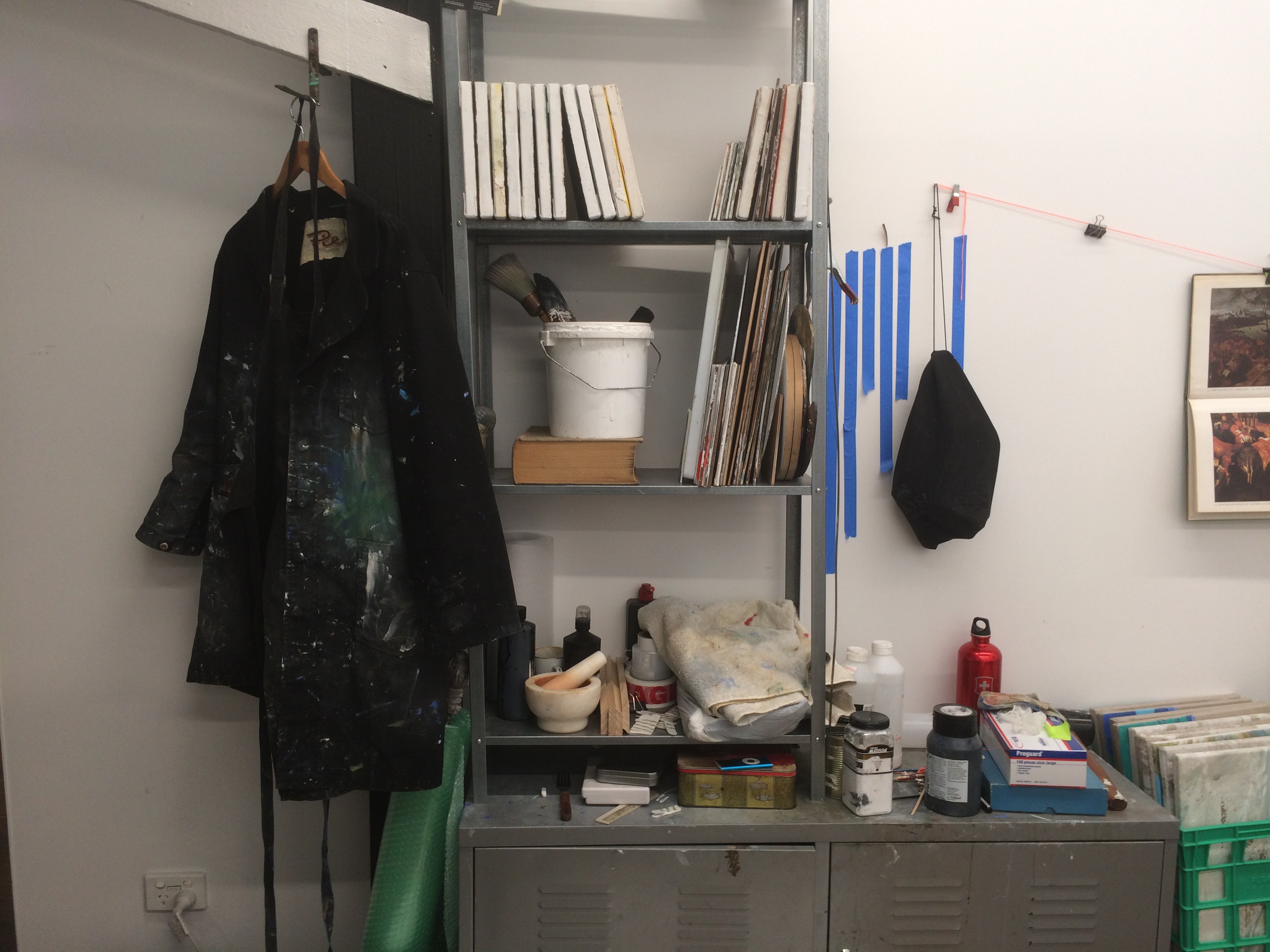
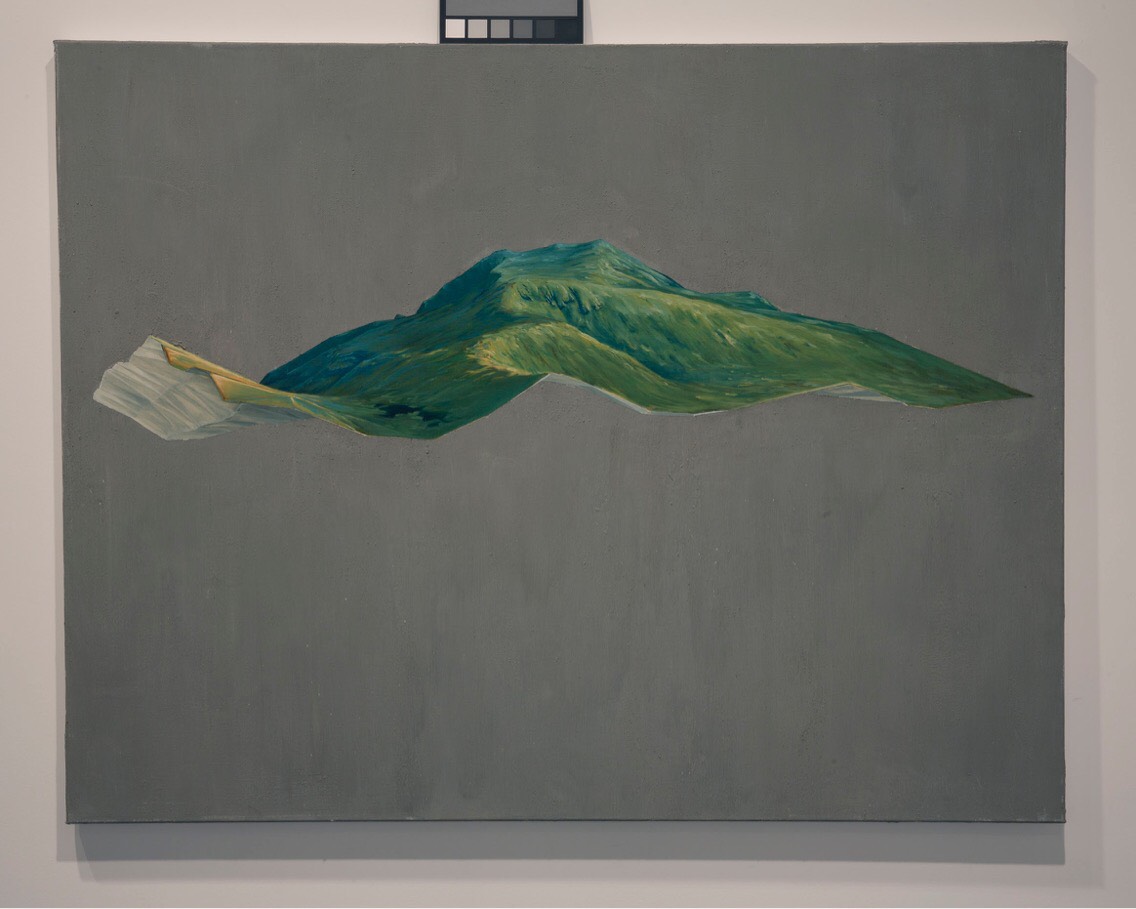
ARTIST STUDIO VISIT - PIERS GREVILLE - THURSDAY 17th MAY 2018 6-7pm
We warmly invite you to meet the artist Piers Greville – the first in our series of special encounters with artists in their studio. Experience art in its raw context and speak with artists directly about their practice and process. Explore their world and work in progress.
Based in Melbourne, Piers is currently completing a Masters by Research in Fine Arts at the VCA. Working predominantly within painting, he works on possible historical perspectives on landscape and imagination, with a present focus on the fabricated landscape. Identified as a high potential student, Piers’s work has been selected to exhibit at the forthcoming Auckland Art Fair.
We’ll meet at the new VCA graduate studios, formerly the heritage-listed Police Stables, repurposed by Kerstin Thompson Architects.
This small group experience is a ticketed event that supports the artist. Tickets are $20.00 per person.
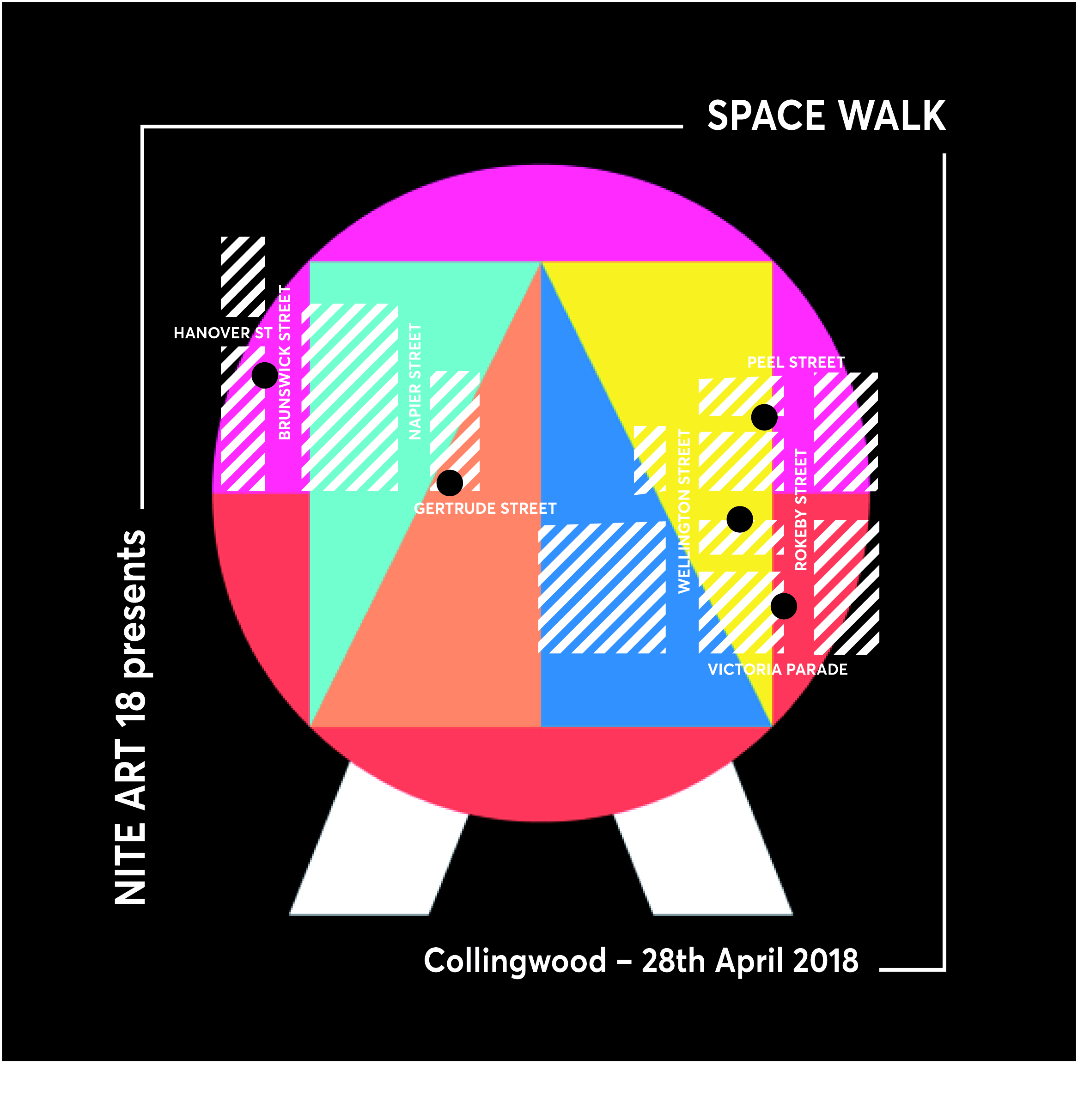
SPACE WALK April 28th 2018 4-6pm
SPACE WALK is a new experiential platform for art. Taking this as a point of departure, our new series of curated walks create an accessible space for you to more deeply connect with art.
On our journey through Melbourne’s inner suburbs we uncover contemporary art hidden behind industrial facades and down unsuspecting laneways. These creative precincts, though each defined by their unique cultures, reveal a city’s transformation and it’s vast socio-economic, cultural, political and architectural history.
Nite Art acknowledges the Wurundjeri people of the Kulin nation as the Traditional Owners of the land on which our first SPACE WALK will take place, and pays tribute to Elders past and present.
Led by emerging curator Rachael Paintin, SPACE WALK in Collingwood and Fitzroy is where we explore and interpret a myriad of architectural space re-inhabited by art. Each site possesses its own character and style, directly informed by the history of the infrastructure it occupies. In this diverse terrain, gallerists and artists activate and adapt to spaces that sometimes sit outside the traditional white cube model.
At select sites, experiences might include artist talks, performances and director-led discussions or simply time for quiet reflection.
Starting at BUS Projects, we finish at Seven ARI with an artists talk Steven Rhall plus wine and cheese.
BUS projects and Seventh ARI are members of All Conference, a recently established collaborative network of fifteen artist-run organisations that, through their programming, support the practices of living Australian artists. Such organisations play a crucial role in the Australian arts ecology, connecting experimental practices to diverse audiences.
By physically bringing audiences to art, SPACE WALK and Nite Art map and make connections, while highlighting the creative ecology of our city.
SPACE WALK is a ticketed event designed to financially support the work that artists and arts organisations do. Participants will be provided with a printed tour map, encouraging ongoing sharing and revisiting of sites.
We invite you to join us for one SPACE WALK or invest in a series to access our expanded program that connects you even more closely to the creative process, through studio visits, gallery walks, private viewings and performances.
NITE ART 17 PROGRAM
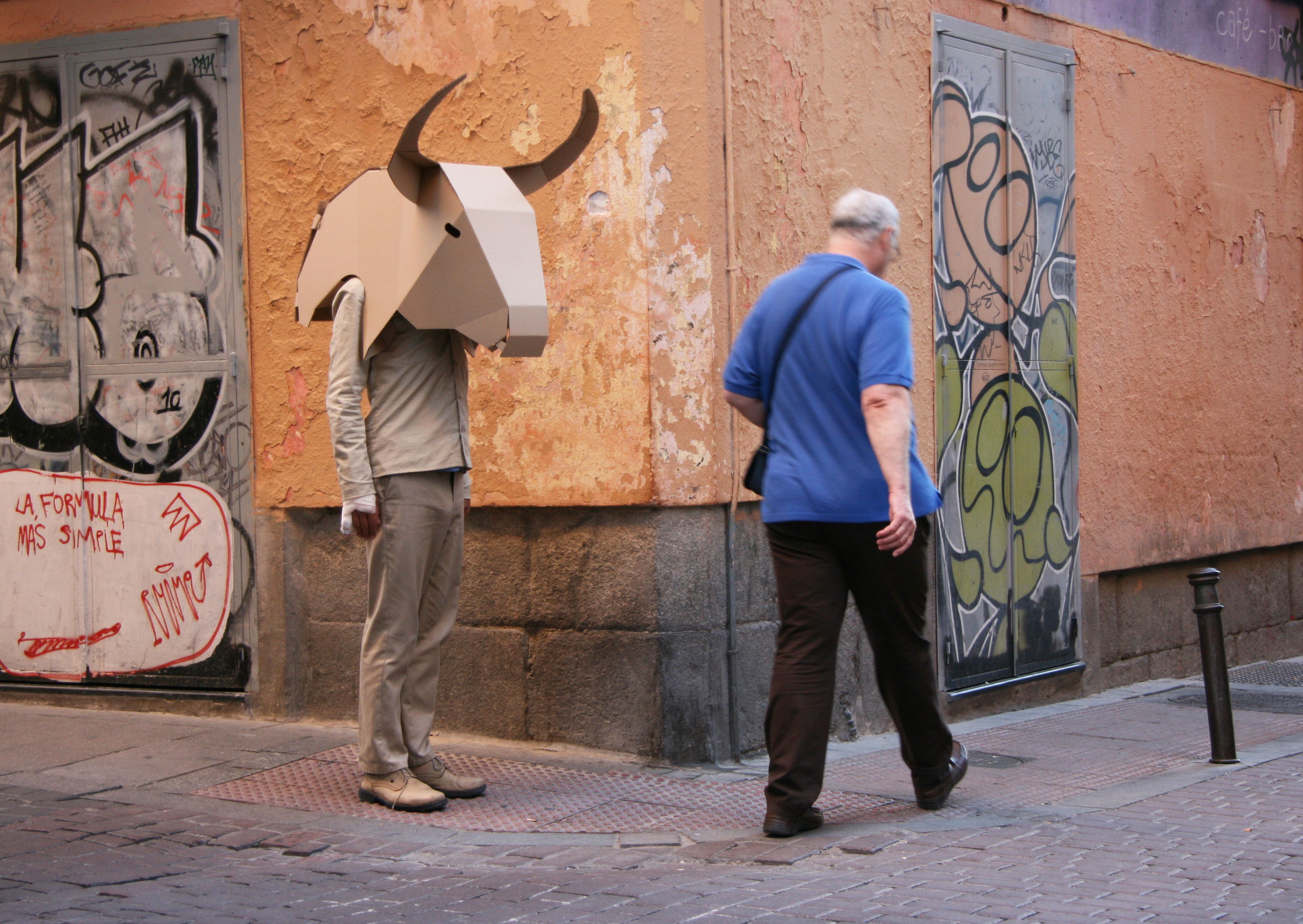
PERFORMANCE STREET ACTIONS IN AN AGE OF HEIGHTENED SECURITY 5.30-6.30pm RMIT GALLERY
mmmm…collective and Mick Douglas
There are 205 temporary bollards around the CBD, installed as anti-terror measures, designed to prevent the type of vehicle-based attack seen overseas and in Melbourne’s Bourke Street Mall. While artists have taken to covering them with colourful material and graffiti art, the bollards remain a reminder of safety issues in our cities.
In light of terrorism-related incidents increasing in Melbourne and overseas, what is the role of public art actions in reshaping cultural landscapes and reclaiming public space in cities today?
In this public discussion, Melbourne performer and academic Mick Douglas will speak with Spanish collective mmmm… to discuss performance street actions in an age of heightened security and risk. Who has access to public space? Who can speak and perform within it? Who can claim ownership of public space, and ultimately the ownership of events in the public sphere?
mmmm… is a collaboration between Emilio Alarcón, Alberto Alarcón, Ciro Márquez and Eva Salmerón, who have been creating projects for public spaces since 1998 from Madrid.
ARTWALK WITH A CURATOR 6.00-7.30pm BOOKED OUT
This year we are pleased to introduce a curator led experience of Nite Art. Join Art Aficionado Tours for a Nite Artwalk of galleries, public art and architecture. The Artwalk includes in-depth knowledge of the most exciting galleries and artists working in Melbourne.
Venture into the labyrinth of city art spaces with Curator Jane O’Neill for an Artwalk through Melbourne’s laneways to find the latest offerings at Melbourne’s best galleries, artist-run-initiatives and independent spaces. Meet the artists and discover some of the most dynamic, hard-to-find contemporary art galleries the city has to offer.
The University of Melbourne returns as a proud partner for this year’s Nite Art. Join Art Aficionado specialist Andrew Gaynor for a guided tour of the University’s Parkville Campus. Highlights include exhibitions, installations projections and performances at Arts West, Science Gallery, Grainger Museum and George Paton Gallery. Discover little known public artworks, architectural gems and illuminating anecdotes involving the history and culture of Australia’s second-oldest university.
CENTRAL CITY ARTWALK. Meet outside the City Gallery Melbourne Town Hall Swanston Street at 6.00pm.
THE UNIVERSITY OF MELBOURNE ARTWALK. Meet at the Atrium, Arts West Building, The University of Melbourne 6.00pm

MAKE A DATE WITH ART AND OUR ART NAVIGATORS 7-10pm
Make a date with art and explore three Nite Art hotspots with one of our enthusiastic Art Navigators.
Venture into the labyrinth of city art spaces to find the latest offerings at Melbourne’s best galleries, artist-run-initiatives and independent spaces. Meet the artists and discover three of the most dynamic, hard-to-find contemporary art galleries in our city.
Artwalk times on the hour: 7-8pm, 8-9pm and 9-10pm. Maximum group size 10 people.
MAKE A DATE WITH ART Meet at The City Gallery Melbourne Town Hall Swanston Street.
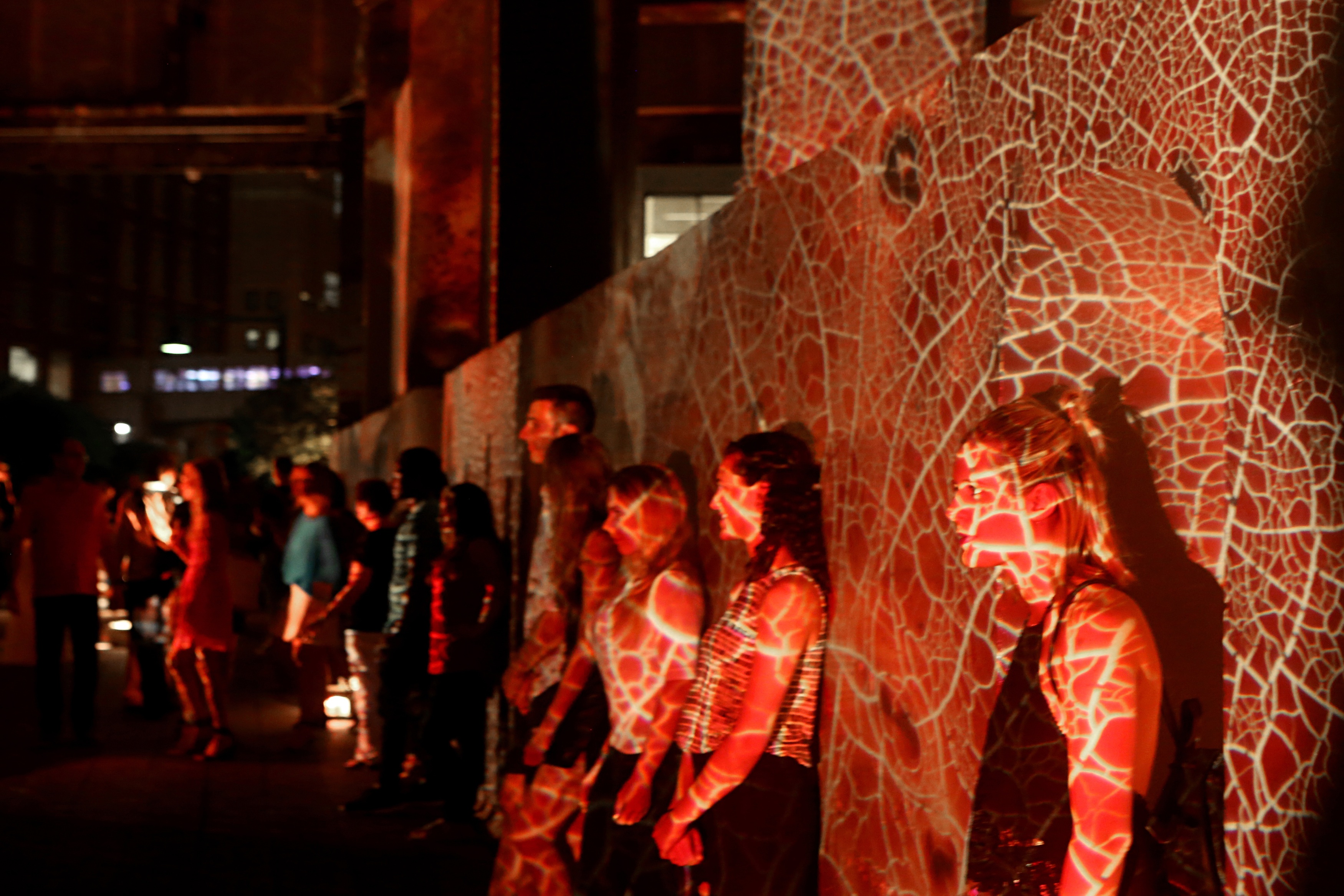
MAKE A DATE WITH ART AND OUR ART NAVIGATORS 6-9pm
Make a date with art and explore Nite Art hotspots with one of our enthusiastic Art Navigators.
Venture into the labyrinth of the University precinct. Highlights include exhibitions, installations, projections and performances at Arts West, Science Gallery, Grainger Museum and George Paton Gallery.
Exclusively for Nite Art, Science Gallery see BLOOD illuminations by US artist Jordan Eagles.
Artwalk times on the hour: 6-7pm, 7-8pm and 8-9pm. Maximum group size 10 people.
MAKE A DATE WITH ART Meet at Arts West building Professors Walk the University of Melbourne.
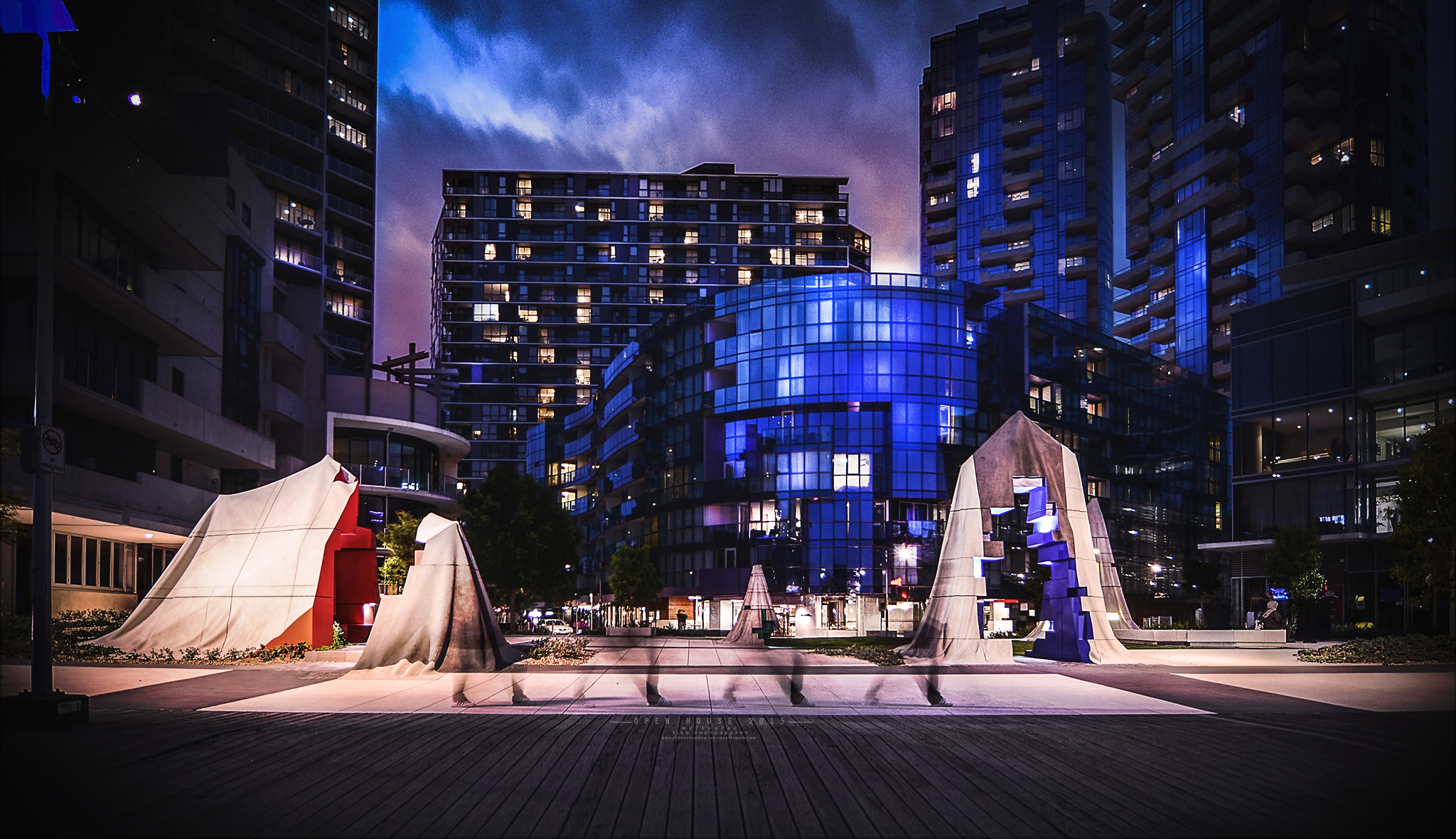
CITY SCULPTURE WALK AT NIGHT 6.30-7.30pm ACCA
Open House Melbourne, Melbourne Prize Trust, City of Melbourne and Nite Art are teaming up together to explore significant urban sculpture in the city at night.
In celebration of the Melbourne Prize Urban Sculpture 2017, run by the the Melbourne Prize Trust, which focusses on the urban environment and recognises and rewards Victoria’s abundant talent in sculpture, City of Melbourne’s Collections Manager Eddie Butler-Bowden will take you on a unique tour during Nite Art that will explore a selection of significant urban artworks from Melbourne’s diverse collection .
Meet outside ACCA 111 Sturt Street Southbank at 6.30pm. BOOKED OUT
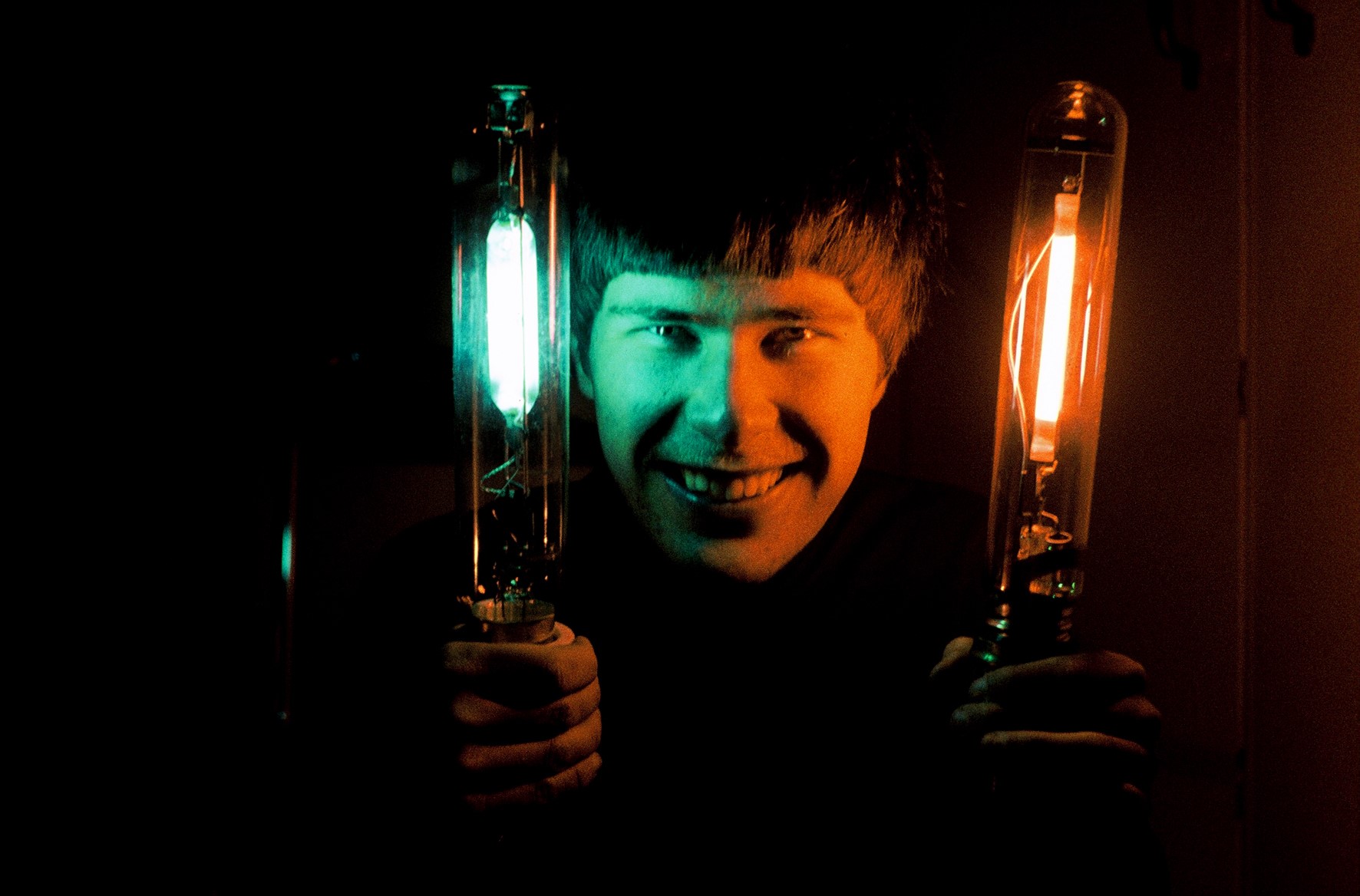
THE OTHER FILM FESTIVAL 6-11pm THE KILN ARTS CENTRE
Highlights from The Other Film Festival will be screened at Nite Art in The Kiln, Arts Centre Melbourne’s temporary art space. Sink into a bean bag and eat some popcorn whilst watching extraordinary stories that show the breadth and diversity of the lived experiences of people with disability. The Other Film Festival, Australia’s foremost disability led film festival, is produced by Arts Access Victoria and is driving change on community perceptions on disability.
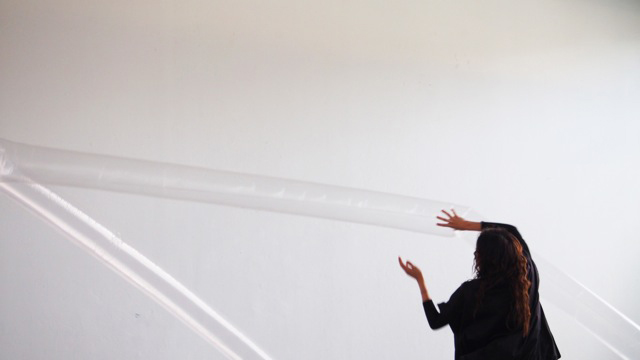
TERESA HSIEH PERFORMACE 6.00pm -9.30pm GEORGE PATON GALLERY
Teresa will be installing a series of clear inflatable objects in the gallery, and as part of a special closing night event for Nite Art 17, will perform or choreograph a work for the public coming through the gallery. The second-floor foyer area of Union House will be decked out as a Winterfest Lounge with beanbags and ambient lighting which will complement the cool airiness of Teresa’s work in the George Paton Gallery.
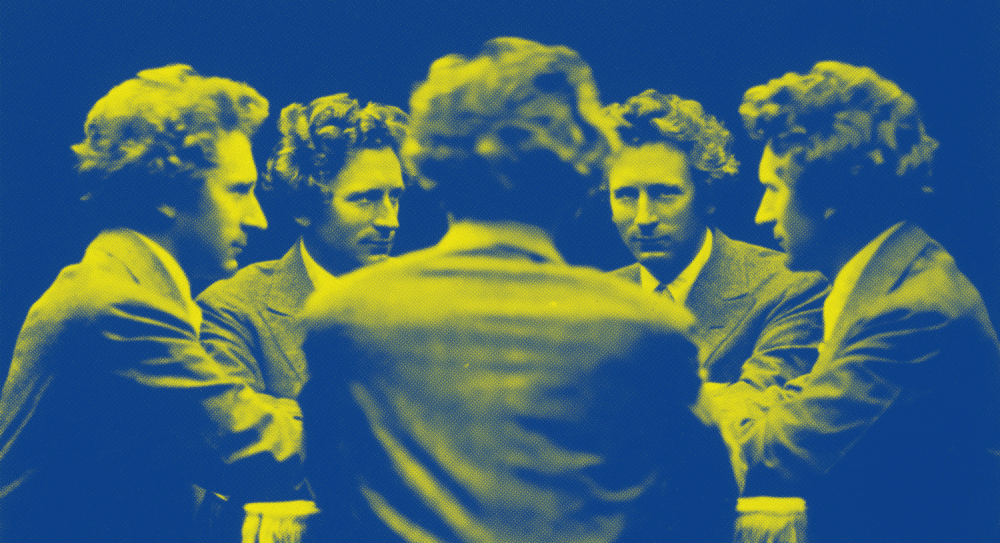
PERCY GRAINGER: FREEDOM AS 6pm-10pm GRAINGER MUSEUM
Presented by Liquid Architecture, Grainger Museum and VCA/MCM as part of Nite Art 2017.
A Liquid Architecture project curated by Mino Peric.
In a series of specially commissioned performances utilising Grainger’s recently rebuilt free music ‘machines’, a group of artists and musicians offer their own multifaceted readings of Grainger’s ‘freedom’, inviting the audience to consider what the term might signify today.
- 6:00PM - Anthony Lyons and Paul Fletcher (VCA/MCM) installation
- 6:30PM - Is There A Hotline?
- 7:30PM - Antonia Sellbach with Julie Burleigh and Alison Bolger
- 8:30PM - Is There A Hotline?
- 9:00PM - Eric Demetriou & Herb Jercher
*these times may change a little on the night as a result of the program’s more ‘evolving / revolving’ programming schedule.
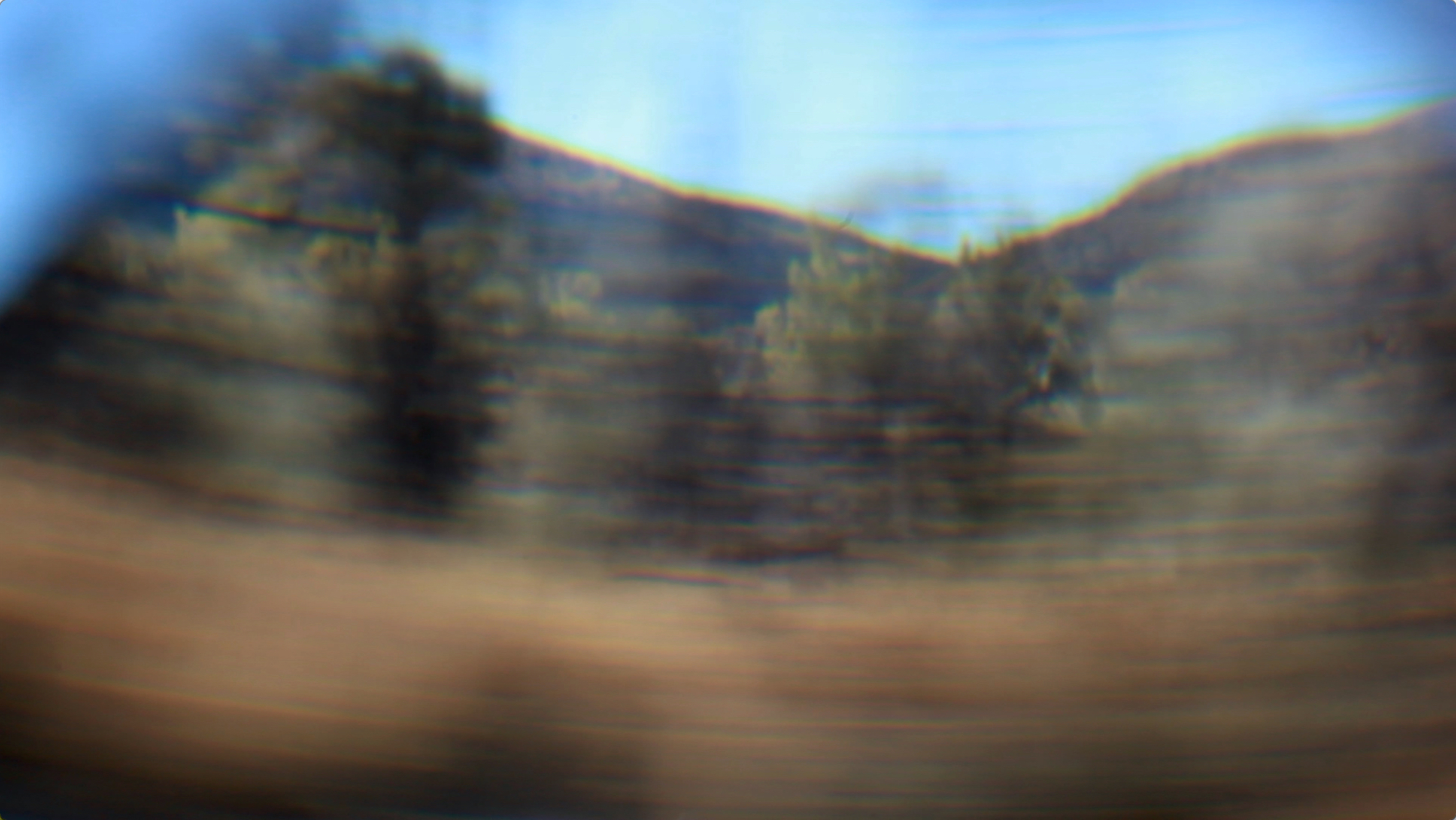
FRAMES OF SEEING INSTALLATION AND PERFORMANCE 6.00pm-10pm ALPHA 60 CHAPTER HOUSE
Meet the artists and curator.
Frames of Seeing is an exhibition that explores stillness, transitions and relational zones that limit and stretch our visual perspectives. Curated by Nikki Lam and presenting works by Leela Schäuble, Hermione Merry and Henriette Kassay-Schuster, this exhibition will bring together two projects that transform Alpha60 Project space into a space for contemplation and an investigations into new frames for moving images.
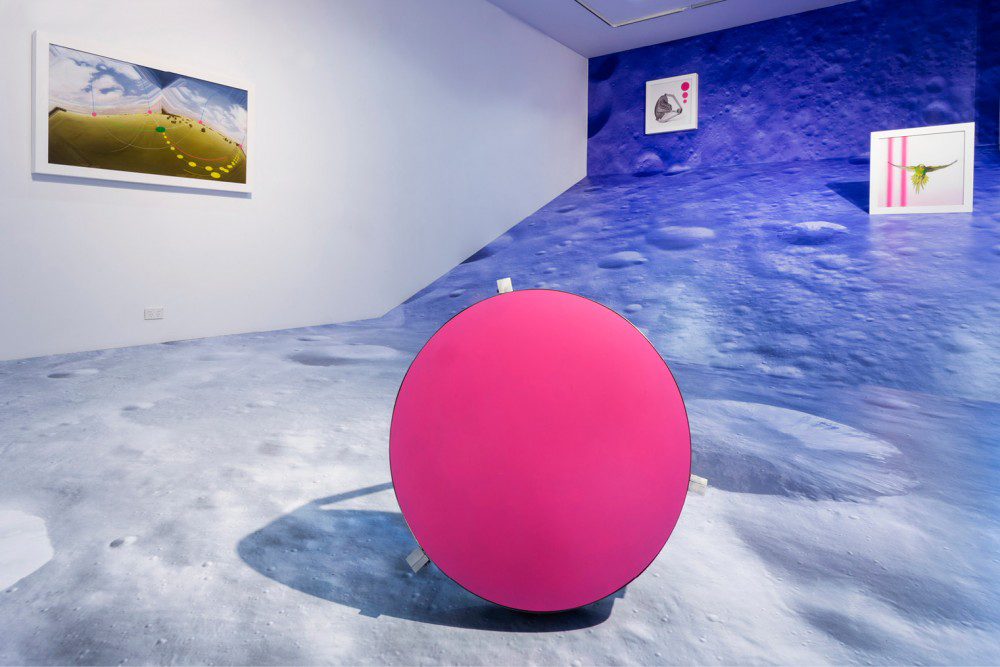
SAM LEACH ARTIST TALK 6.30pm-7.30pm LINDEN NEW ART
Hear Artist Sam Leach discuss his practice and works from his solo exhibition Avian Interplanetary at Linden New Art in residence at the Domain.
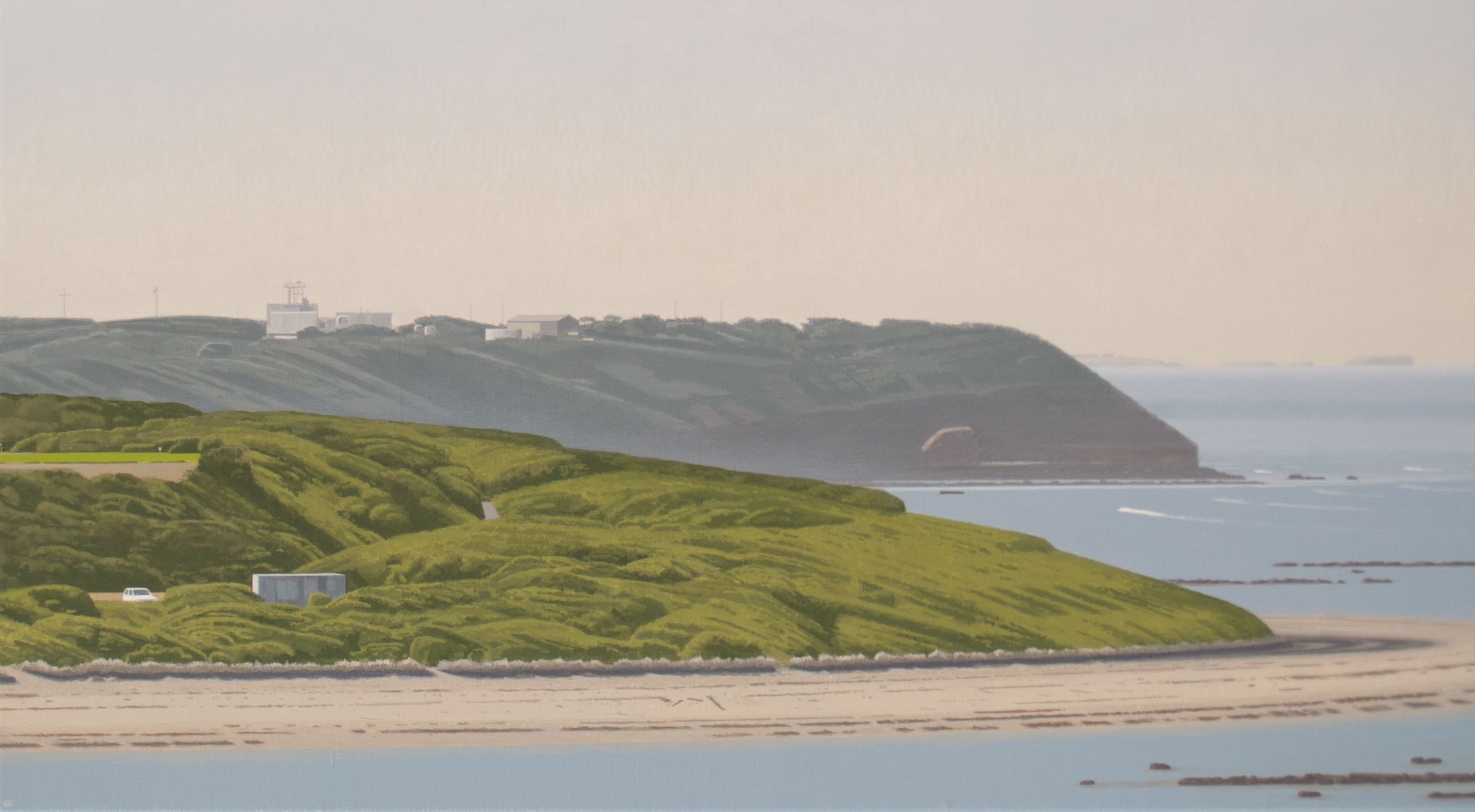
KEN SMITH ARTIST TALK 7pm FLINDERS LANE GALLERY
Ken Smith talks about some of the thoughts and processes behind the creation of his most recent exhibition “Coast Light – Recent Paintings” at Flinders Lane Gallery. This talk will reveal how a contemporary realist painter constructs his works.
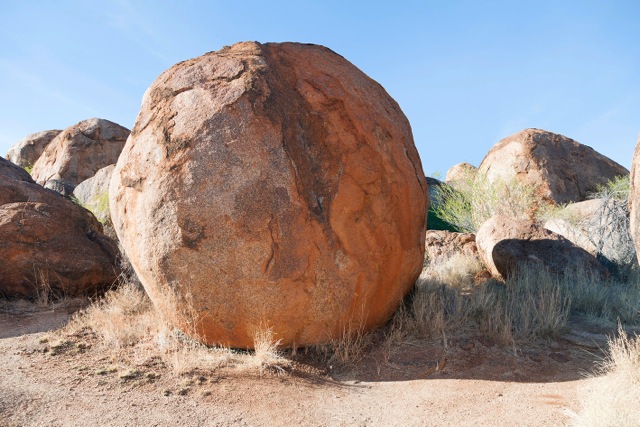
FABIAN KNECHT Lecture Performance 8-9.30pm FORUM THEATRE ARTS WEST THE UNIVERSITY OF MELBOURNE
As the inaugural international guest artist for Nite Art, German and Berlin based artist Fabian Knecht will present a Lecture Performance that speaks to his recent global ISOLATION projects and a new work, SPLIT, created in this, his first visit to Australia. Knecht will travel to a remote conservation reserve in the Northern Territory to undertake its making. Drawing on the canon of the Land Art movement of the 1960s and ‘70s, SPLIT will bring into question the inherent values of the natural or built environment and our interpretation of these through art frameworks. See more in NEW.
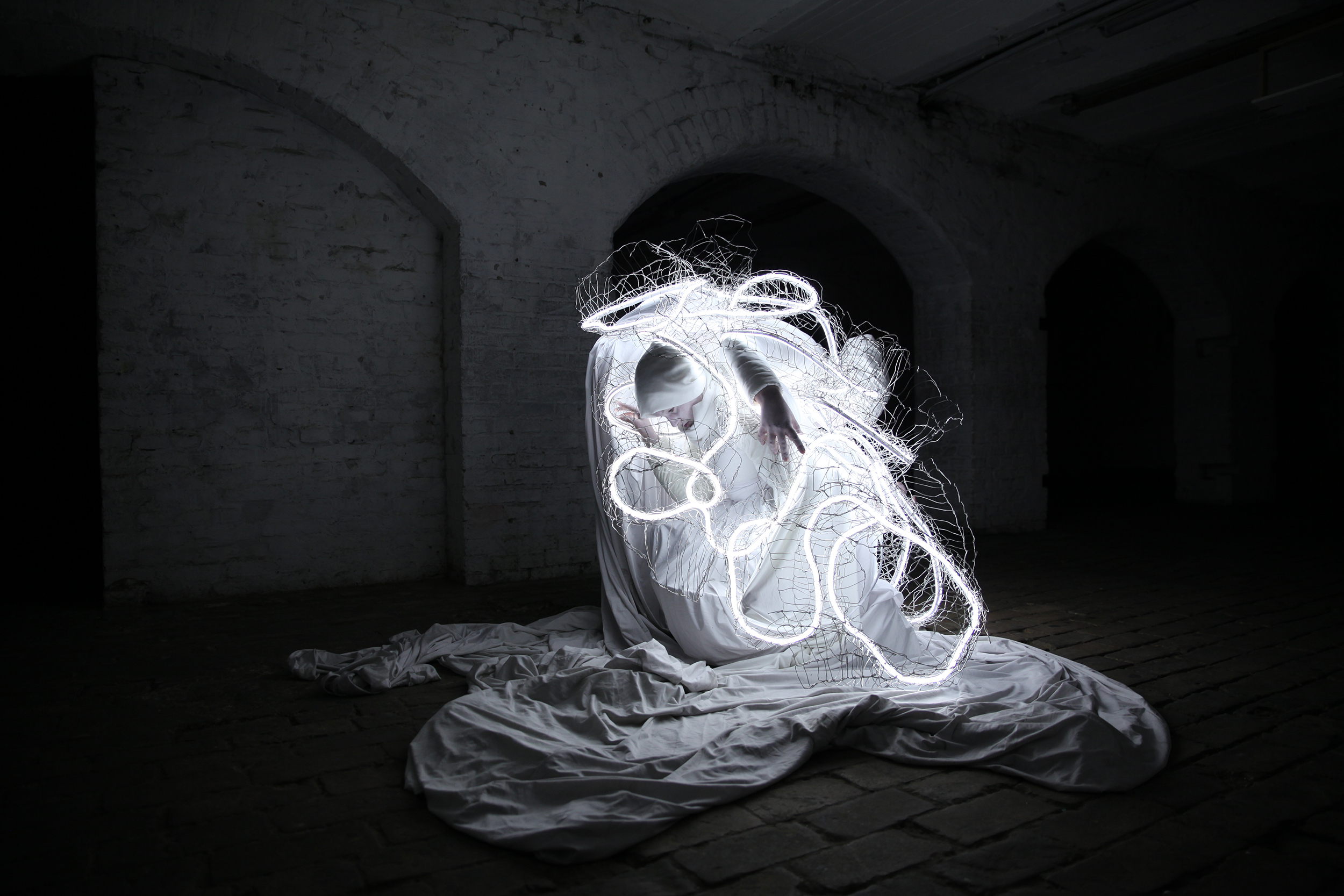
HANNAH QUINLIVAN SPATIAL DRAWING AND VOCAL PERFORMANCE 8-8.20pm and 9.30pm-9.50pm
As the night draws on, Holding Pattern will inscribe the darkness of the street outside Flinders Lane Gallery with light and the human voice. This new work by Hannah Quinlivan, in collaboration with Louise Keast and Alexandra Hobba, will combine a spatial drawing from LED lights with a performance of classical vocals that respond to the qualities of light and space.
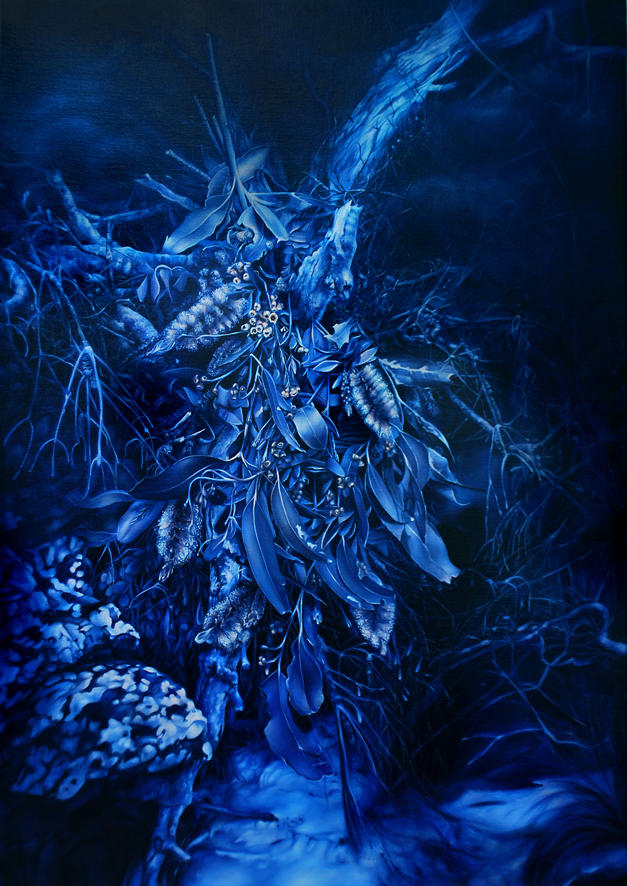
GINA KALBISHIS LIVE DRAWING AND TALK 8.45pm
Gina Kalabishis investigates her painterly arēte, activating the Flinders Lane Gallery Showroom in shimmering blue light, themed “Once in a blue moon”. On the night the artist will be present to give an informal talk and will be creating a live night drawing responding back to Flower Vasette’s arrangement thus generating a full loop of captivating art making.
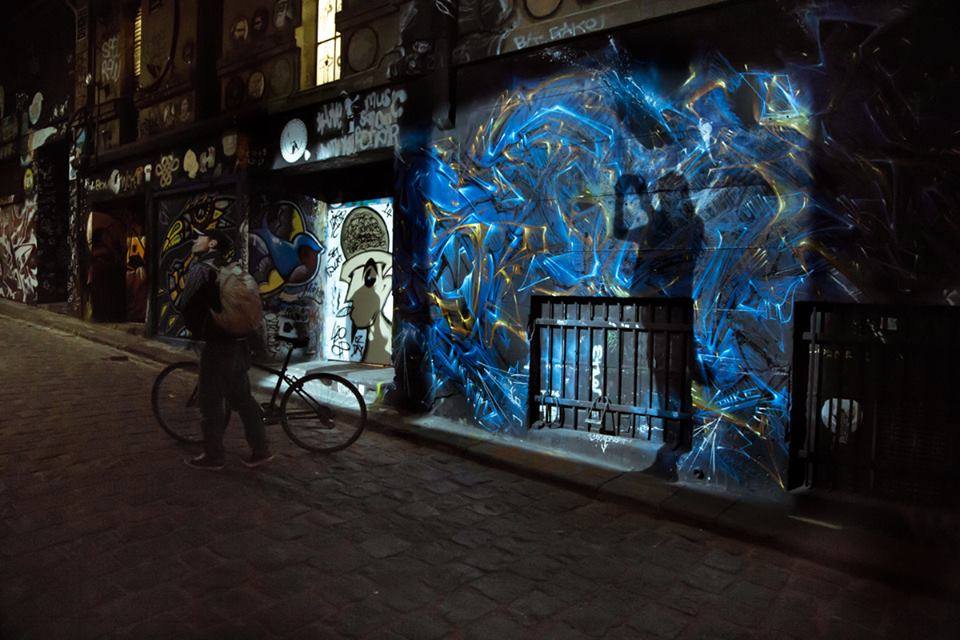
MEET PHEONIX STREET ARTIST AT NITE 9-9.30pm
Melbourne is known worldwide as one of the key hotspots for street art, with many of its artists enjoying international renown. Join Phoenix an elder identity of the street scene whose work reveals a deeply humanist streak and incisive political edge. He will also give a fascinating demonstration of his technique. Secret location to be revealed.
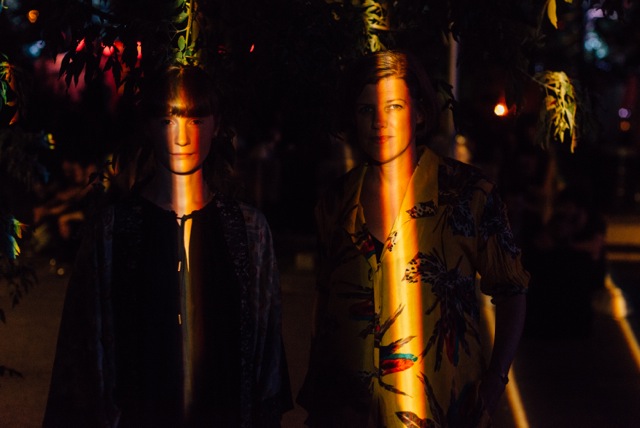
LOOP PROJECT SPACE & BAR - LATE NITE HUB
We’re excited to be welcoming Loop Project Space & Bar this year as part of our program and our Late Nite Hub through to midnight.
Pop in to see Hair caught in Kangaroo Paw, an installation by Siying Zhou, and Nikki Lam’s video work Uprooting Mandarin from 6pm.
In another first for Nite Art, immerse yourself in a live performance direct from Berlin of Electro acoustic bug beats - Felicity Mangan and Stine Janvin Motland presents Native Instrument via Stoneclap.
Stoneclap brings international performances to intimate audiences around the globe making the world more personal through live music. With Stoneclap, one audience and one artist connect over a 2-way livestream designed especially for music, sharing music and stories as if the artist were in-house.
Stick around as Loop becomes our Late Nite Hub and we celebrate the artistic wonder of Melbourne long into the night.